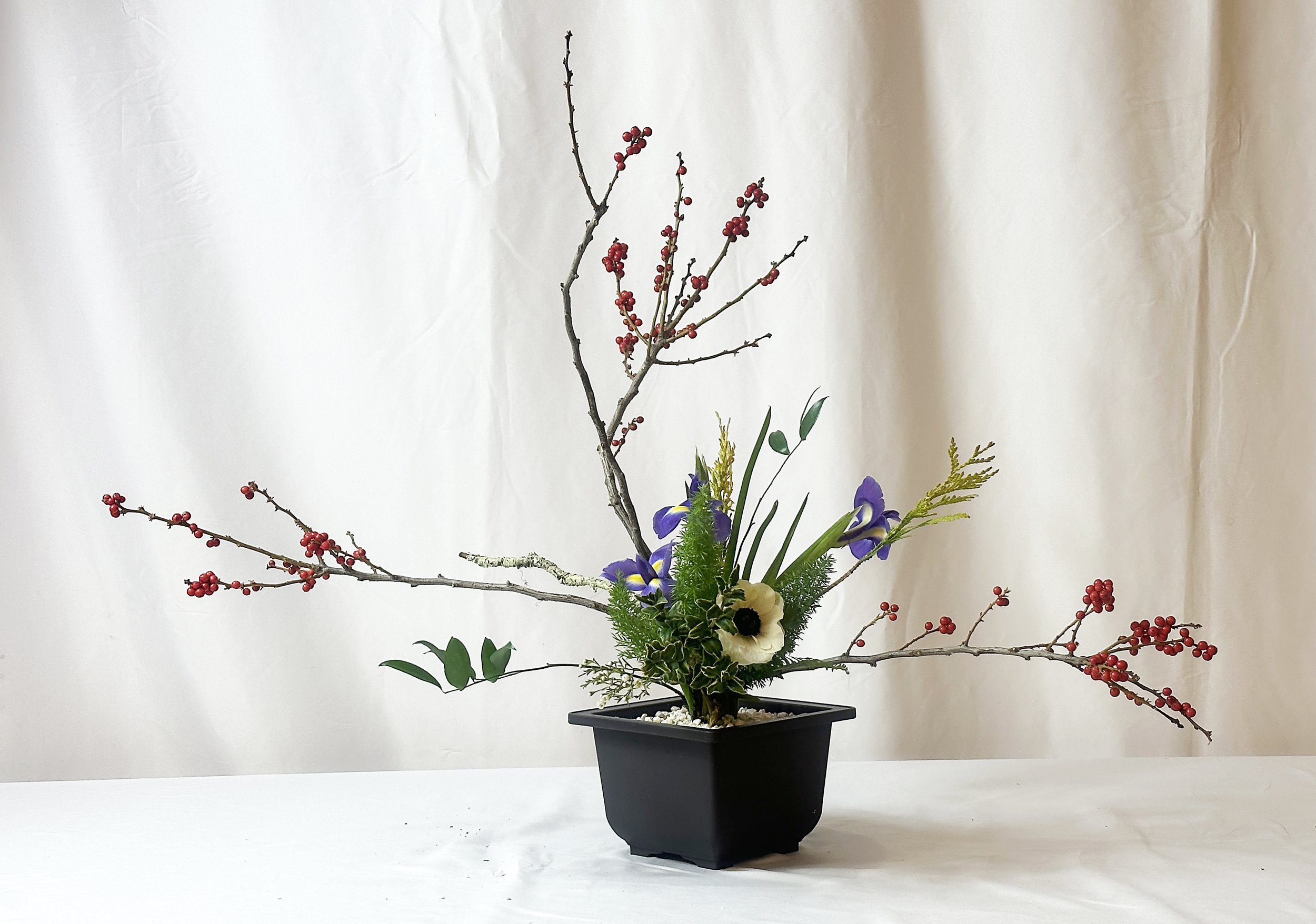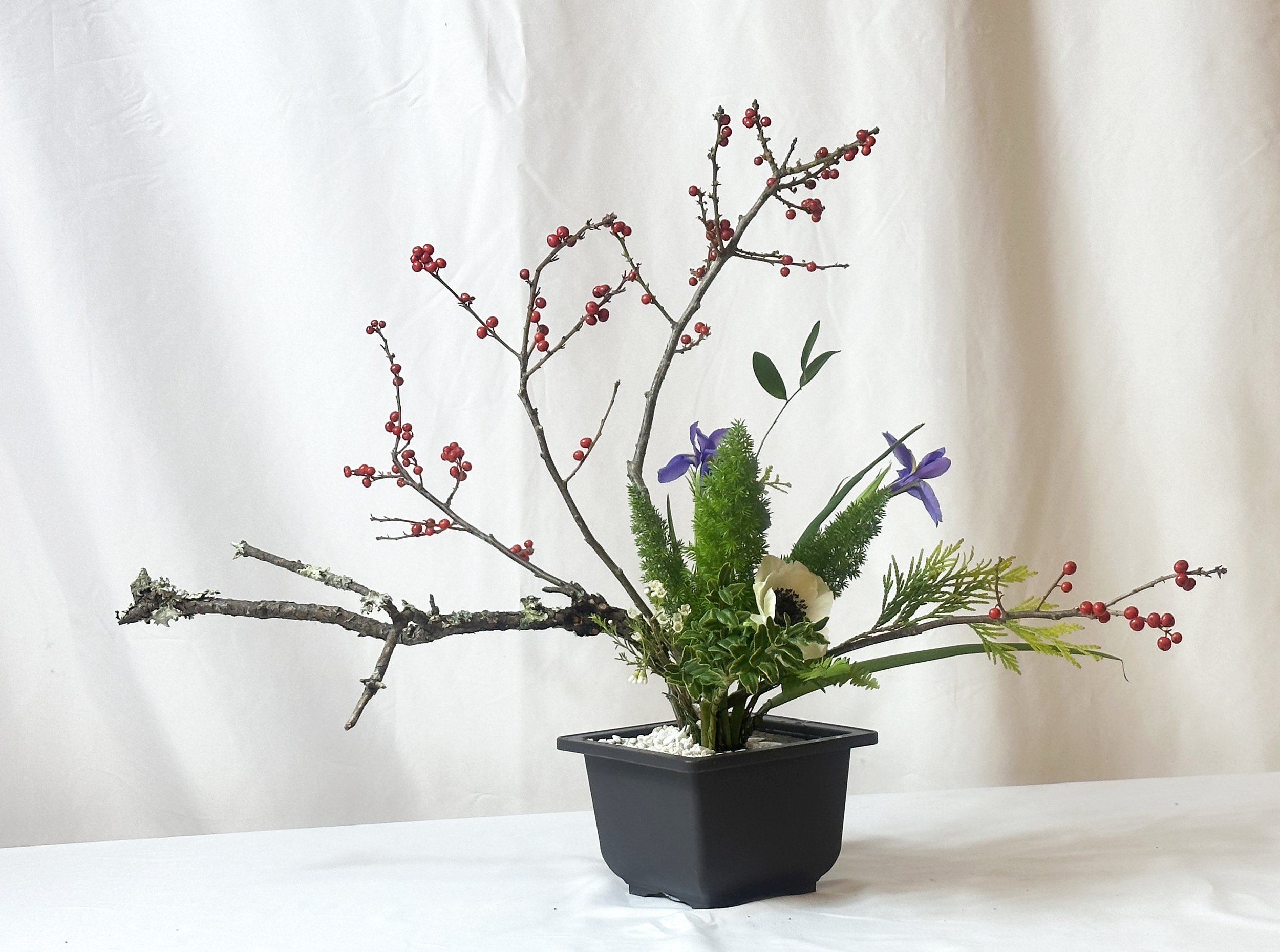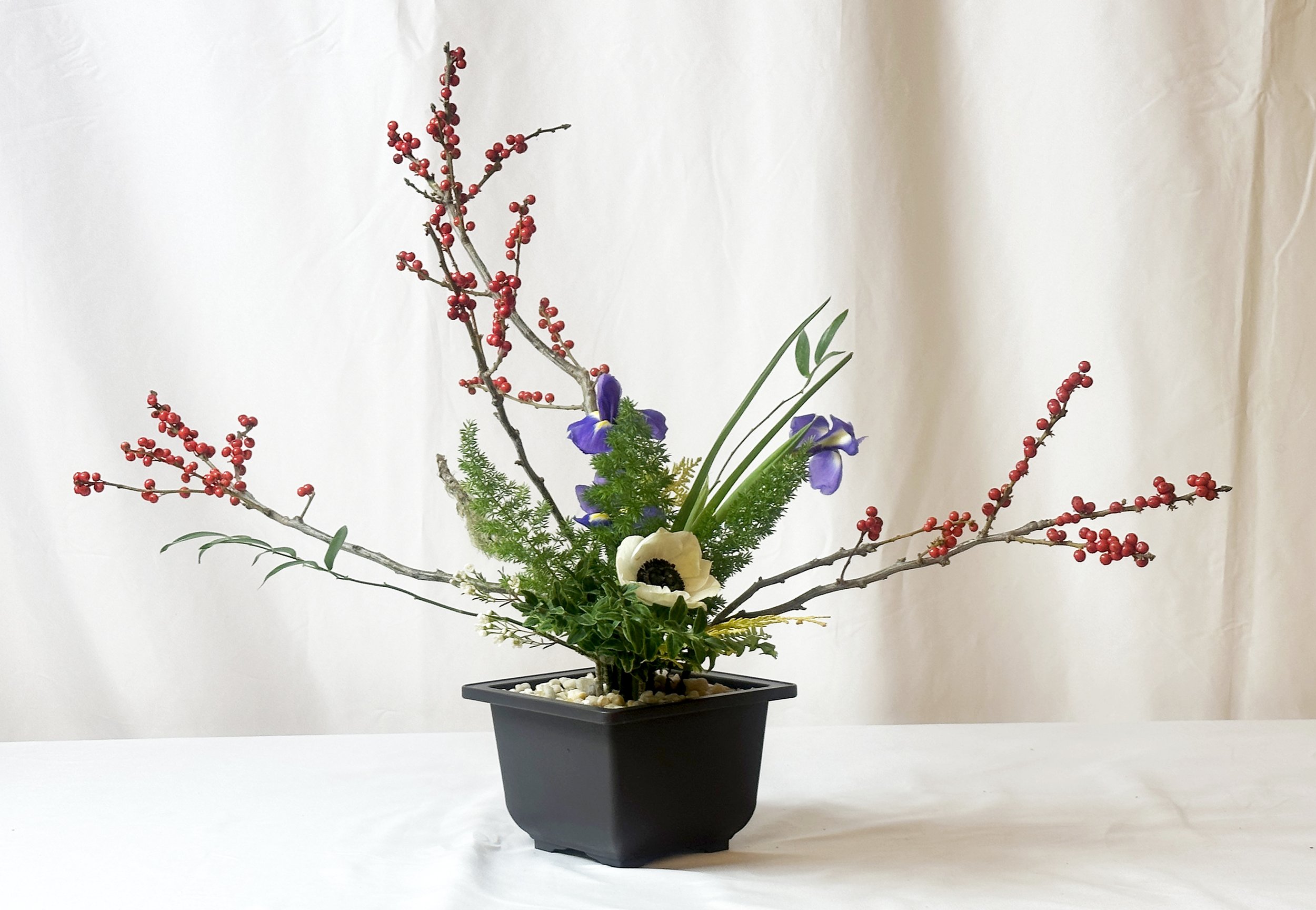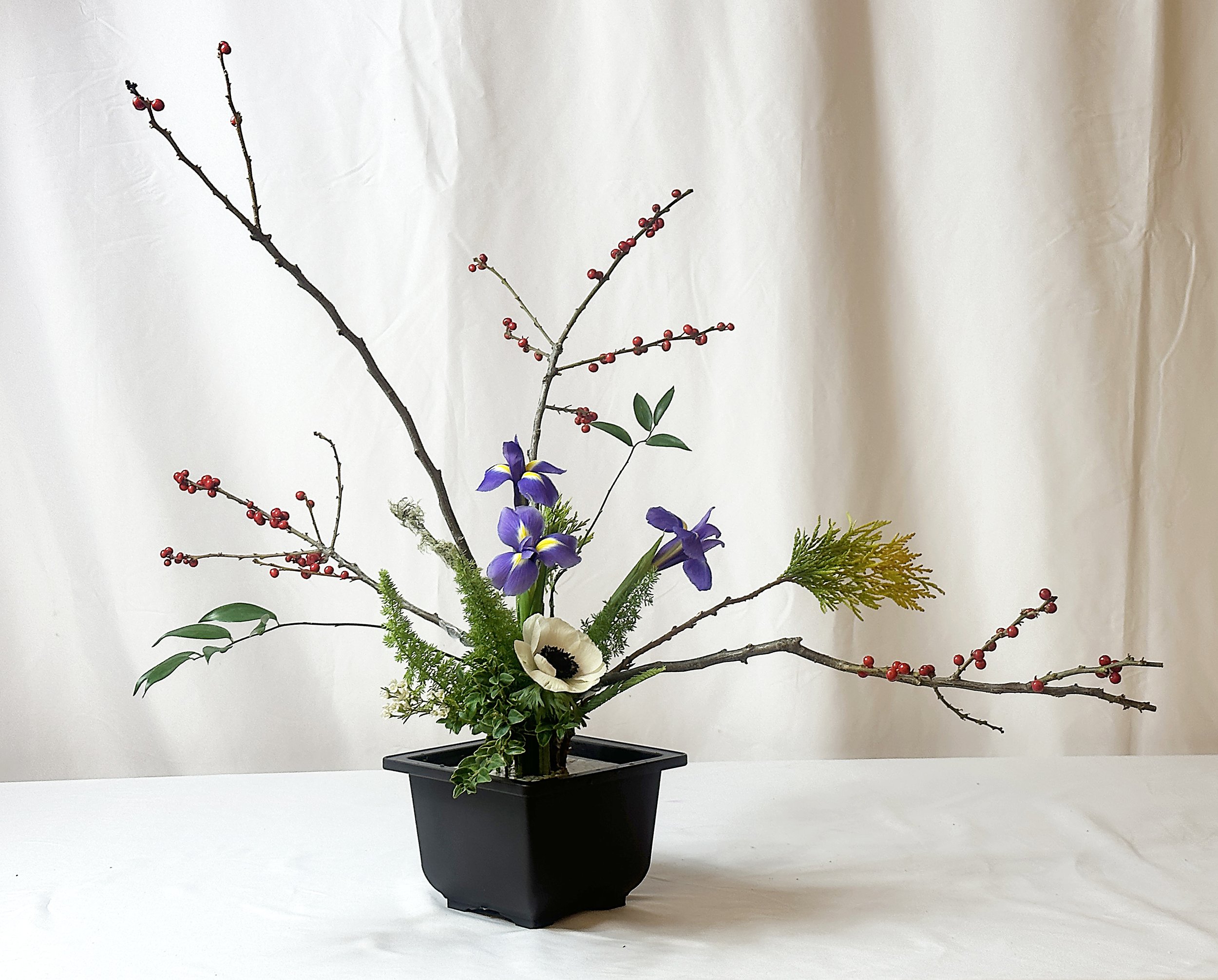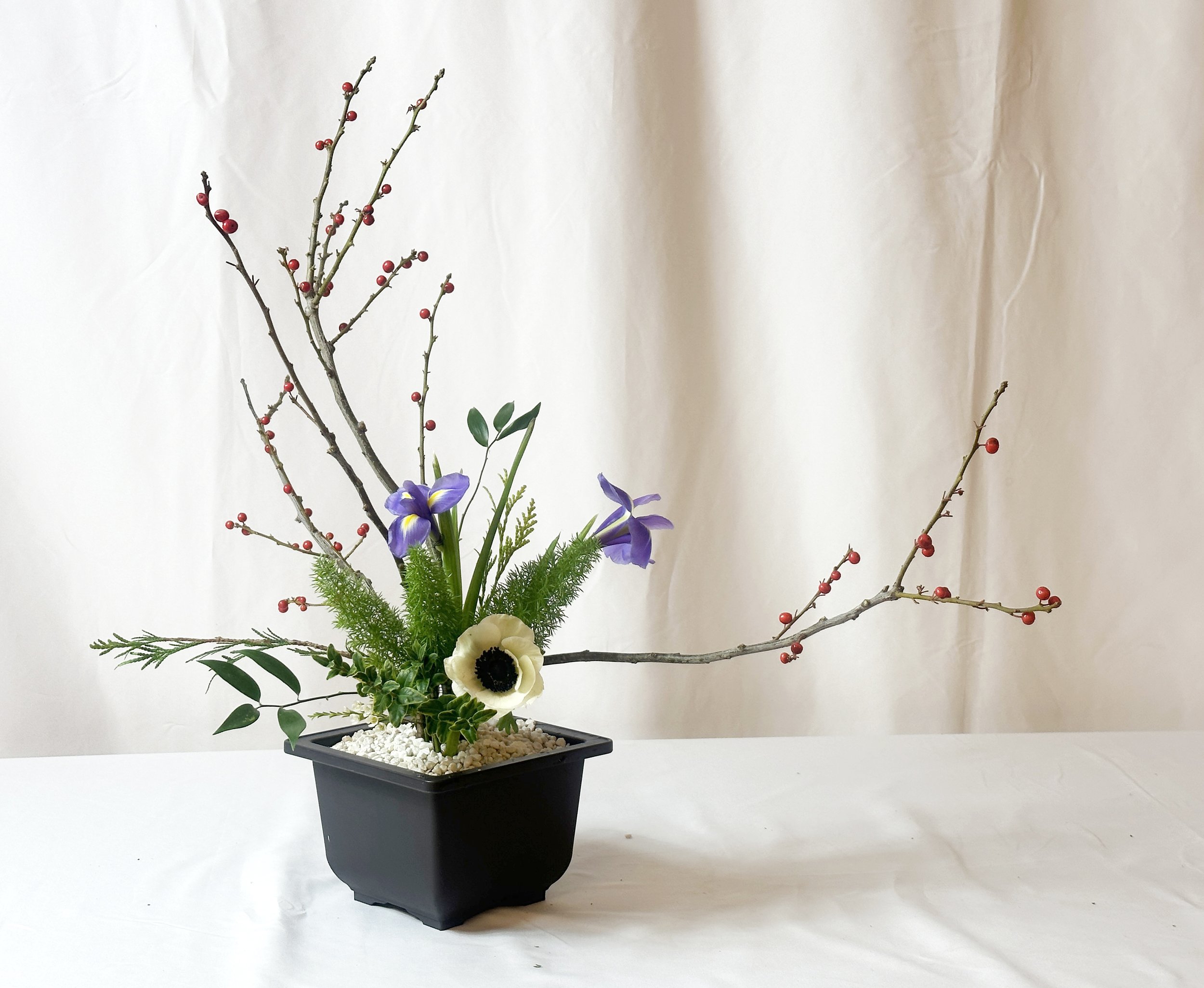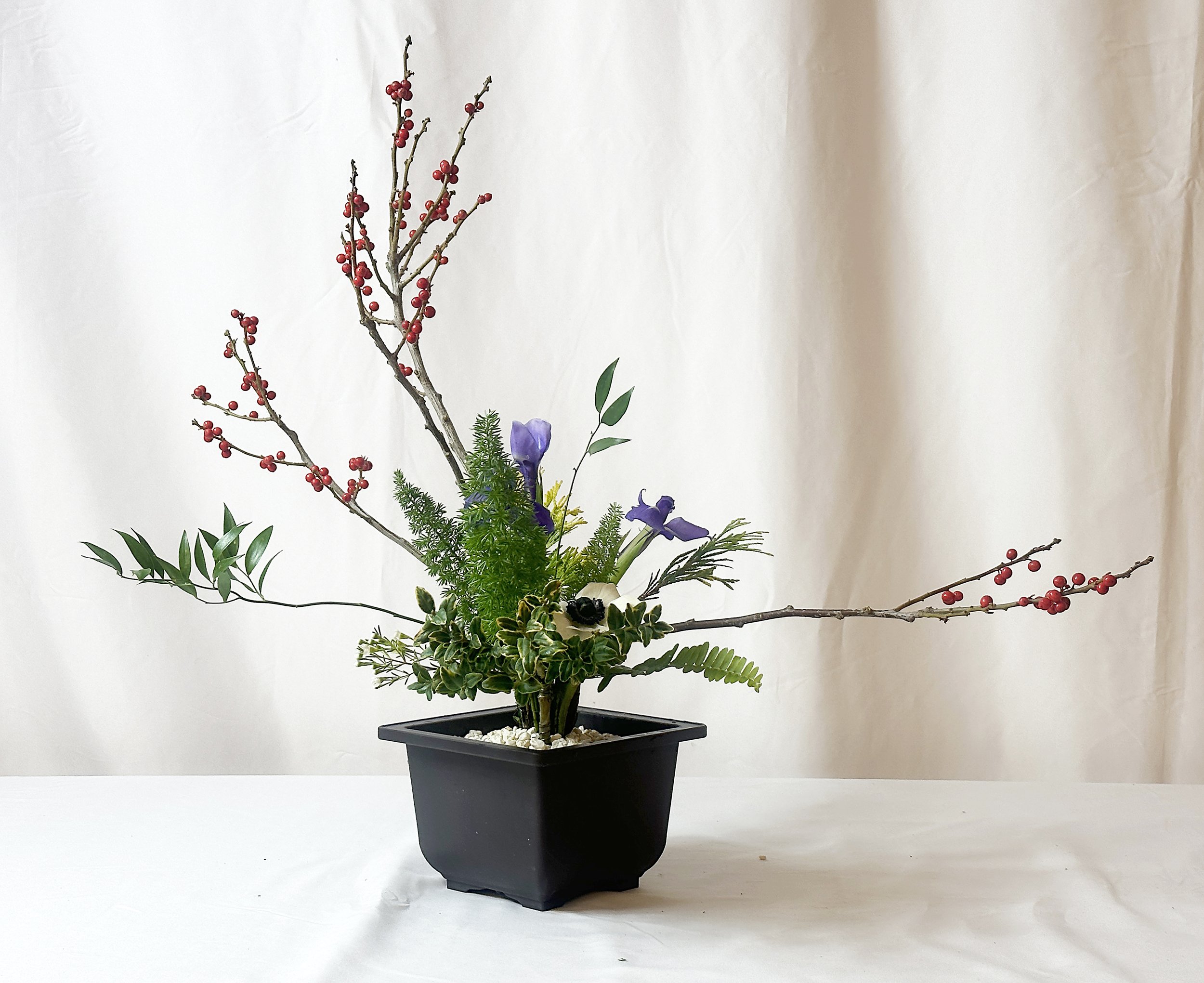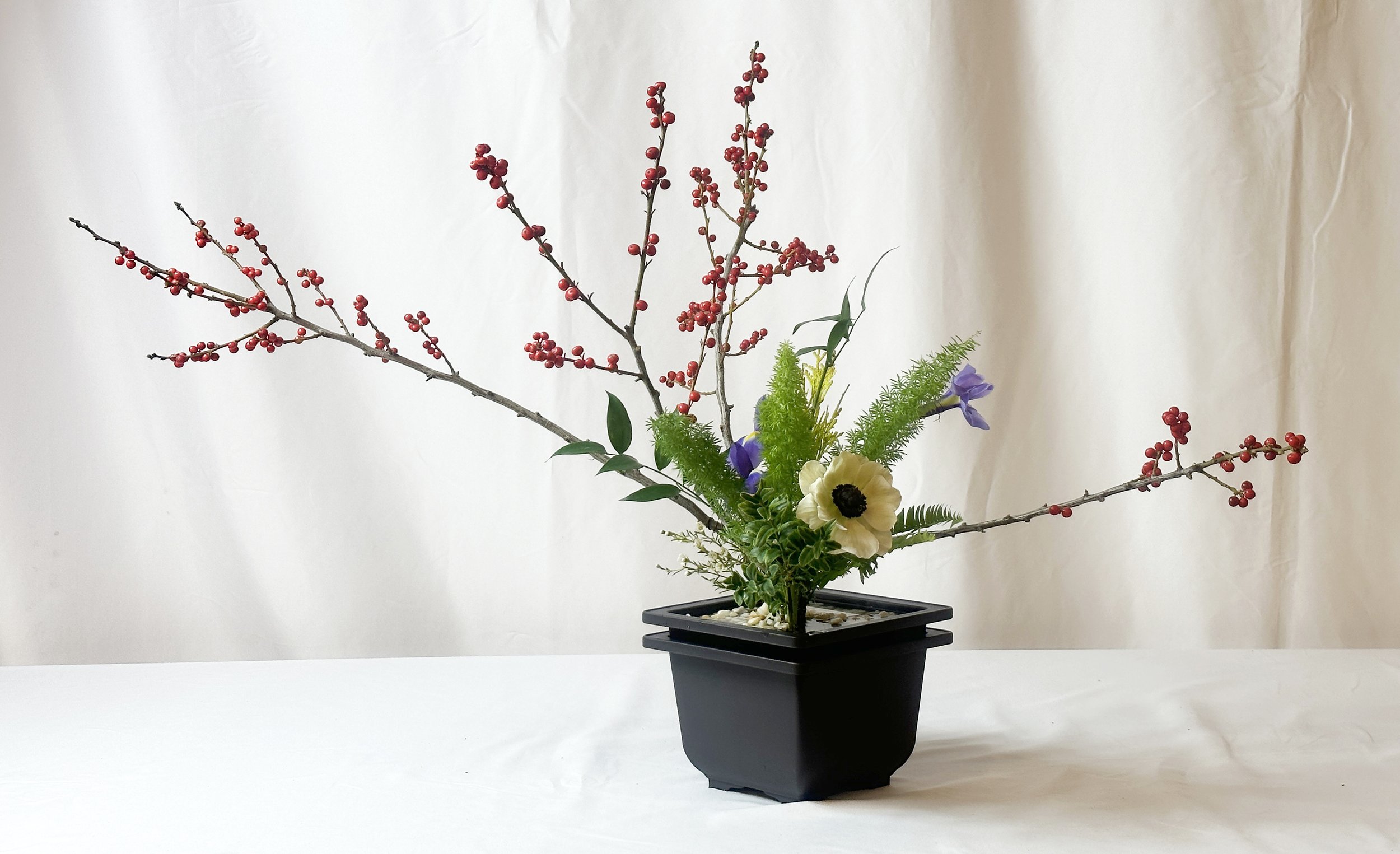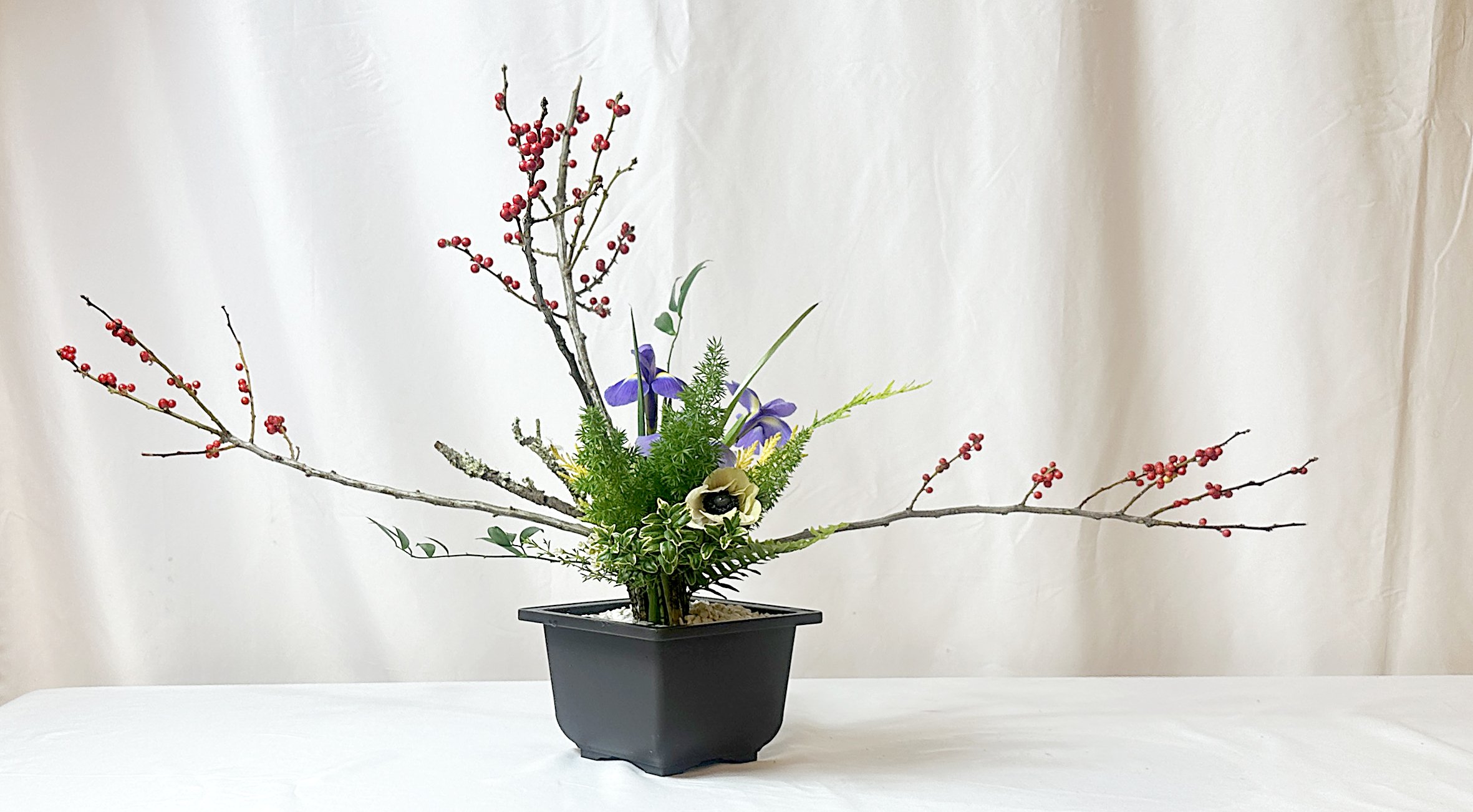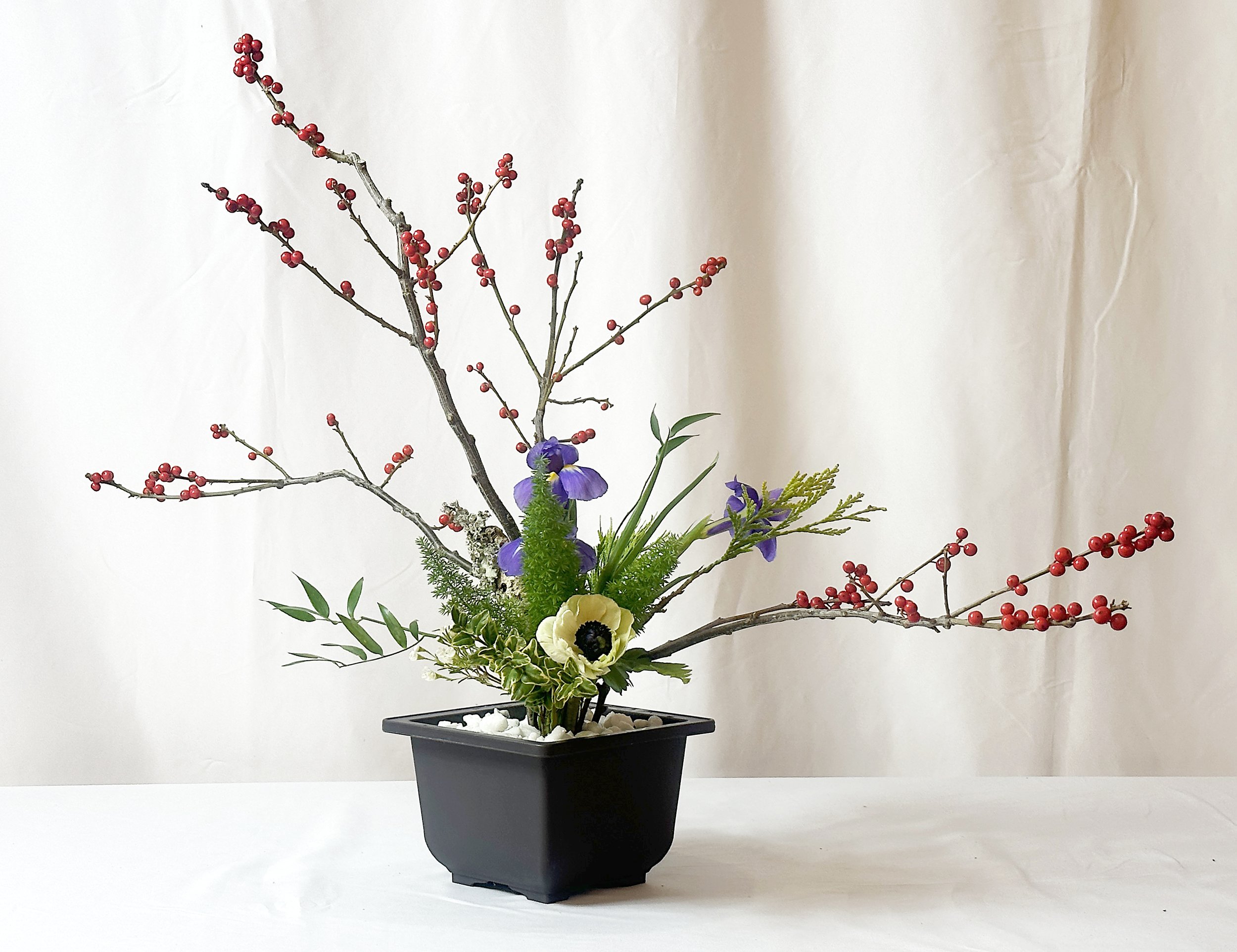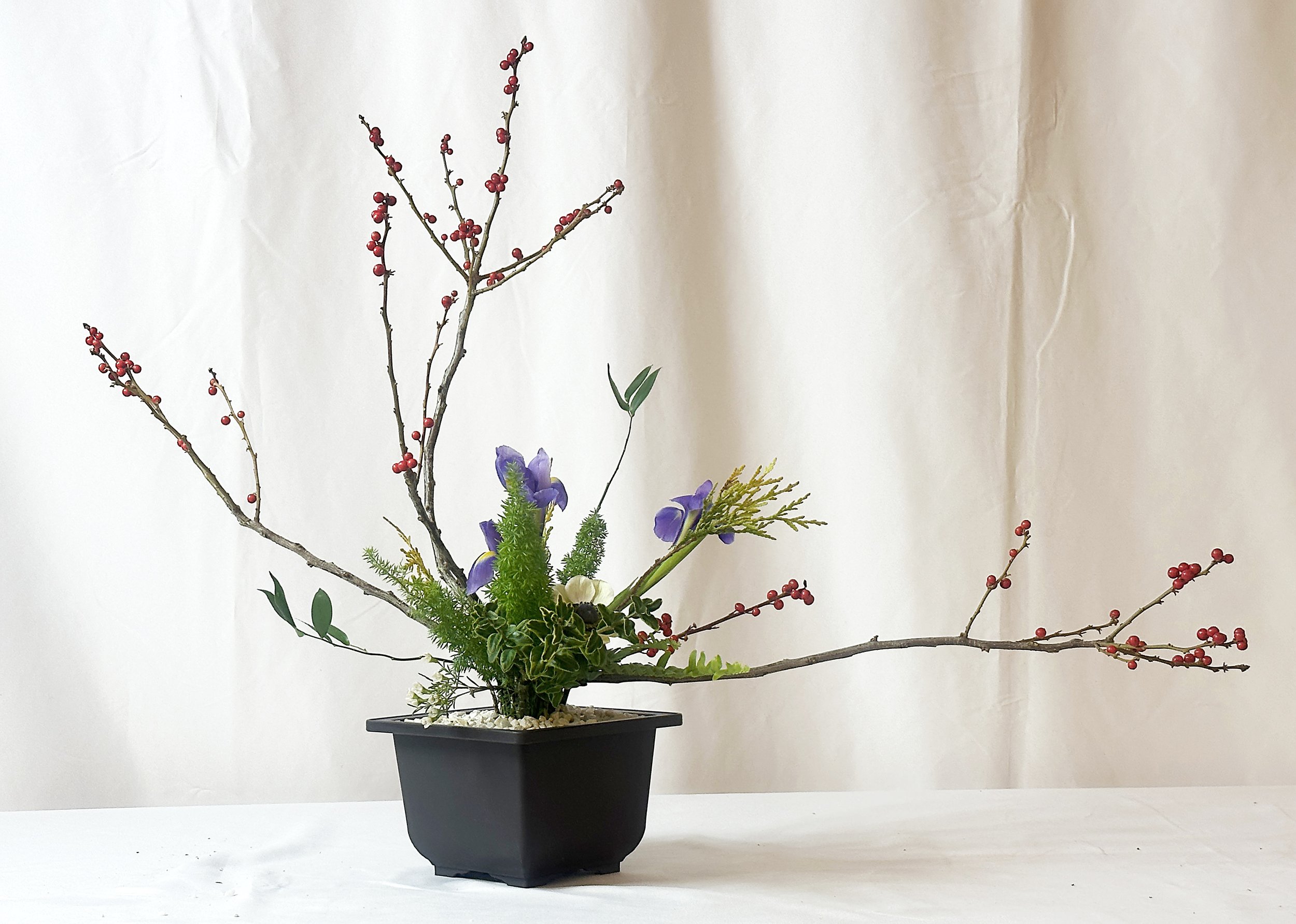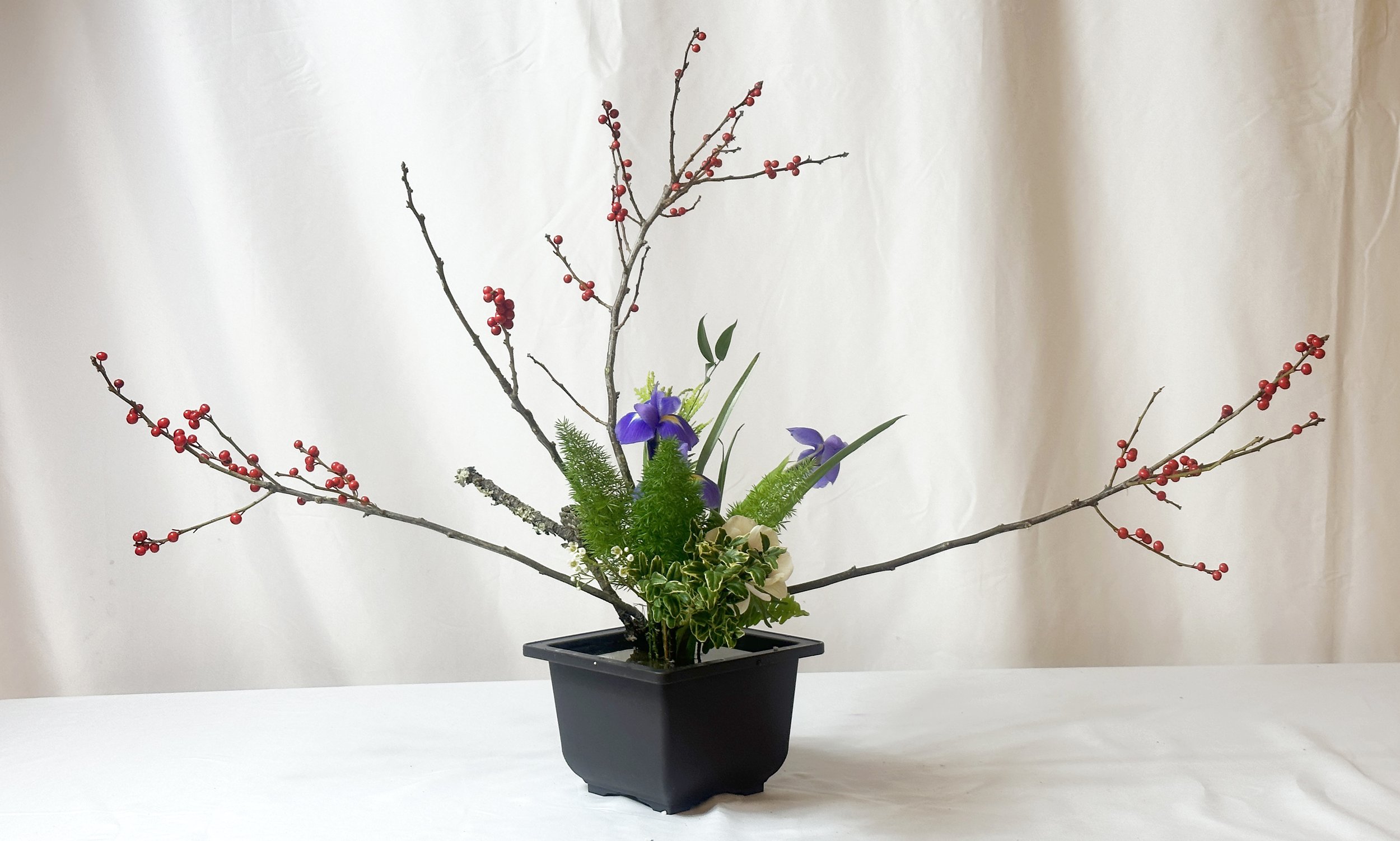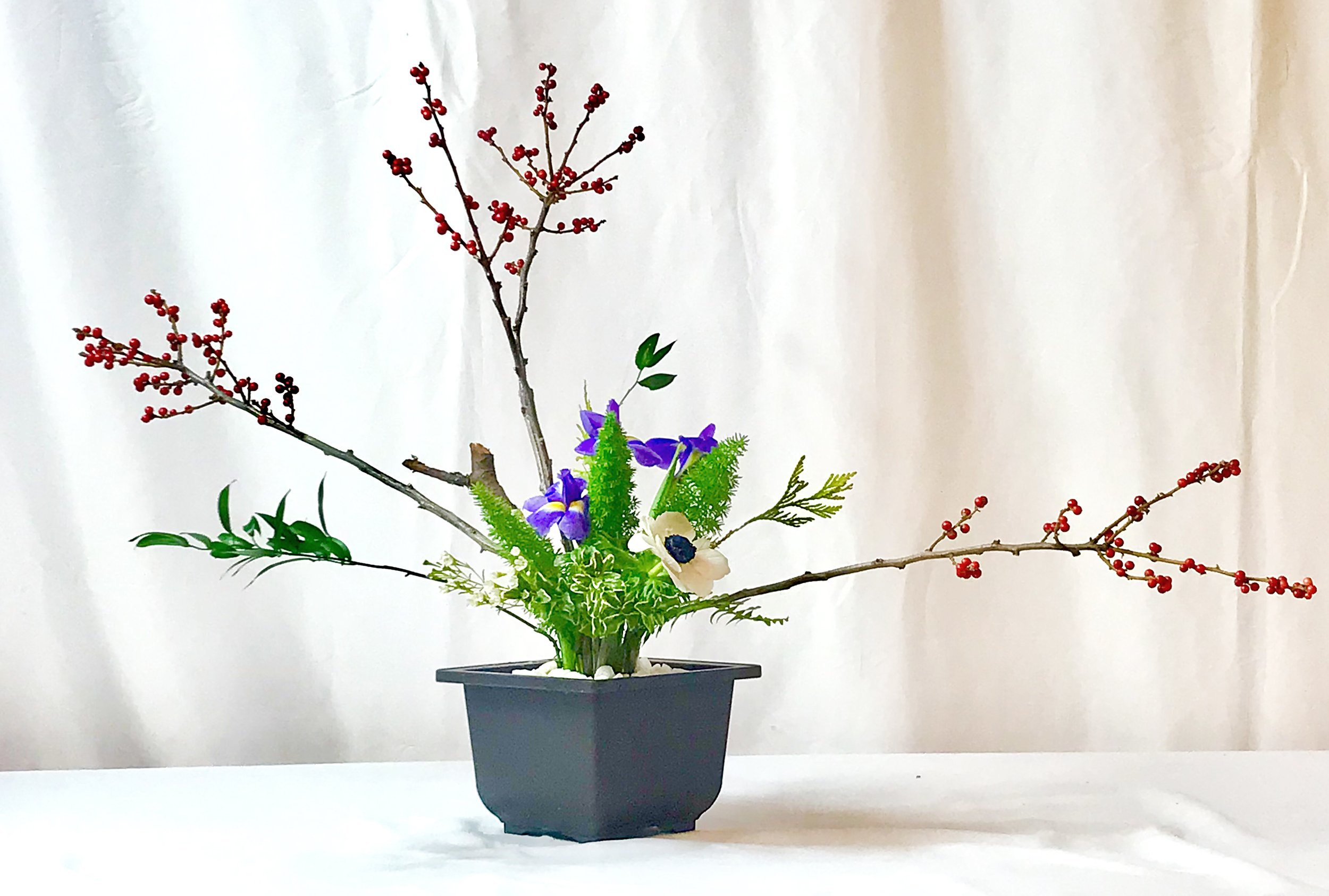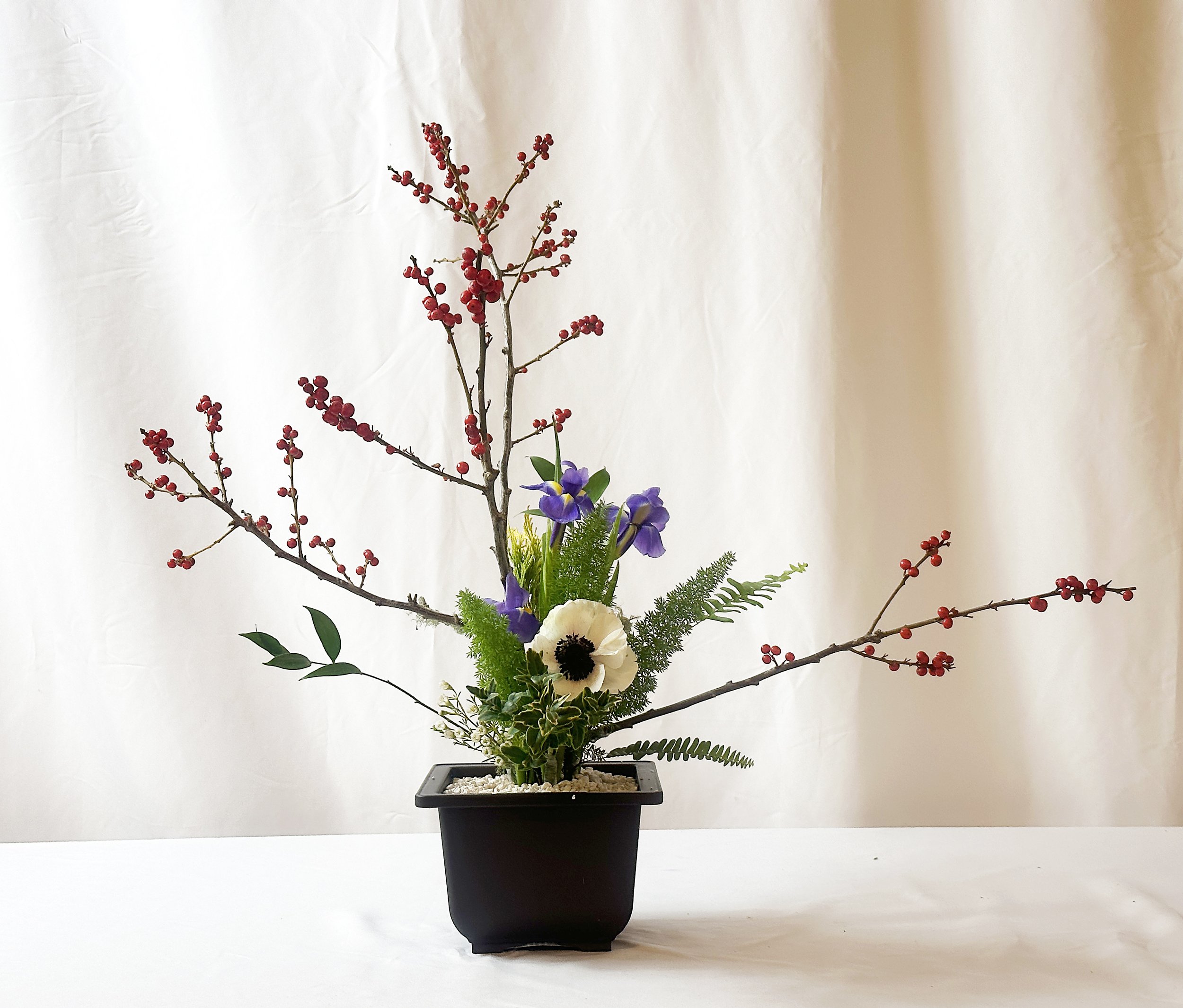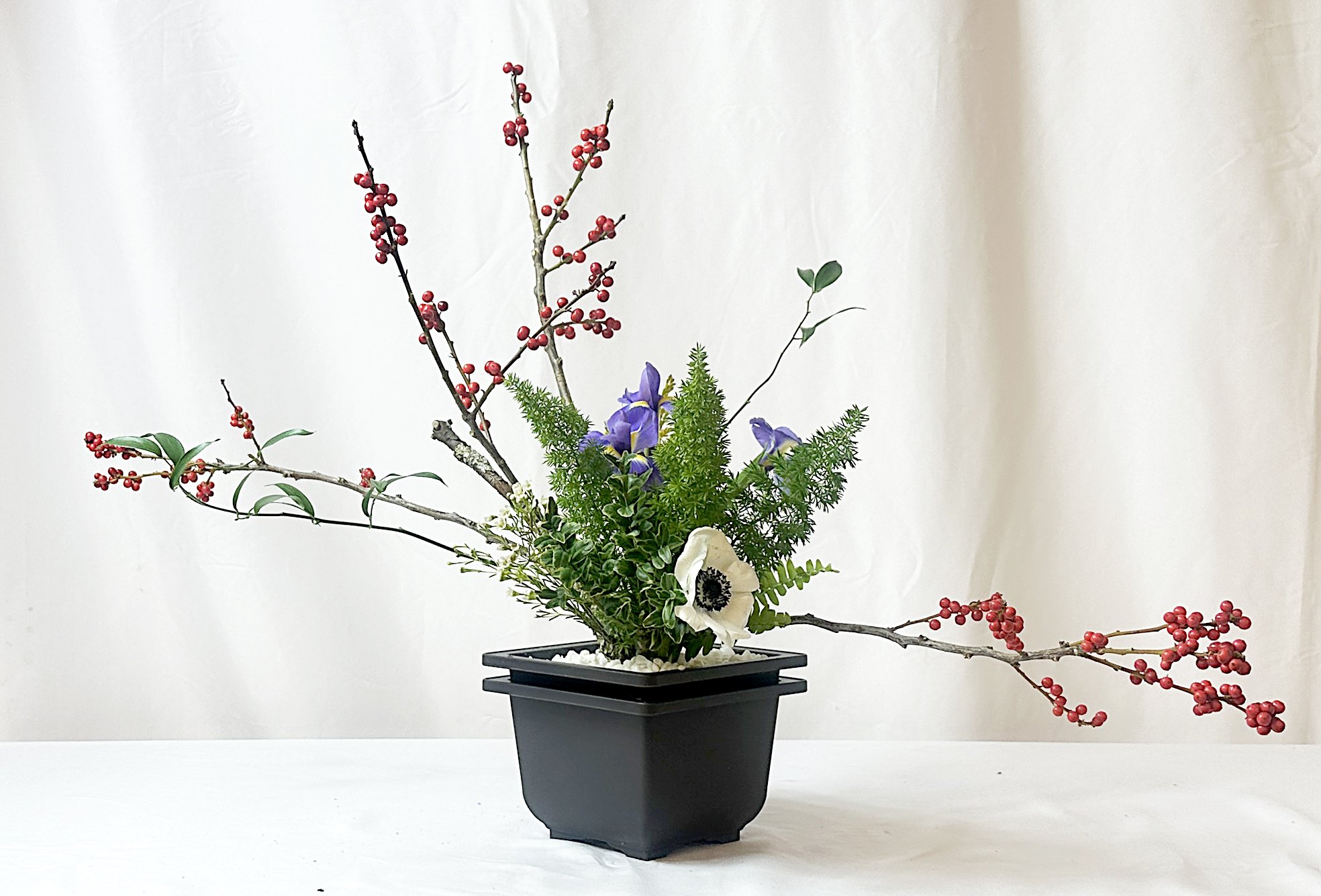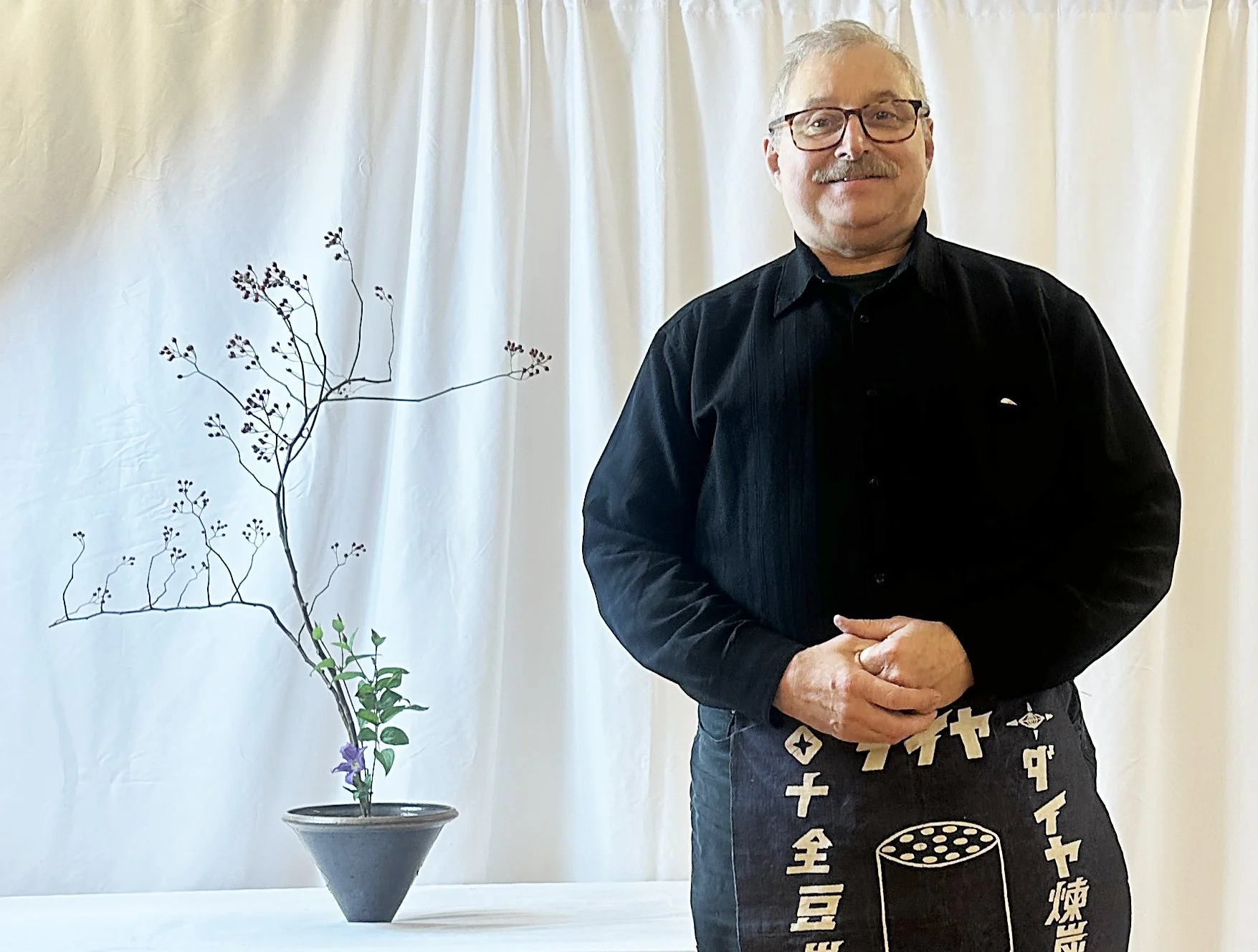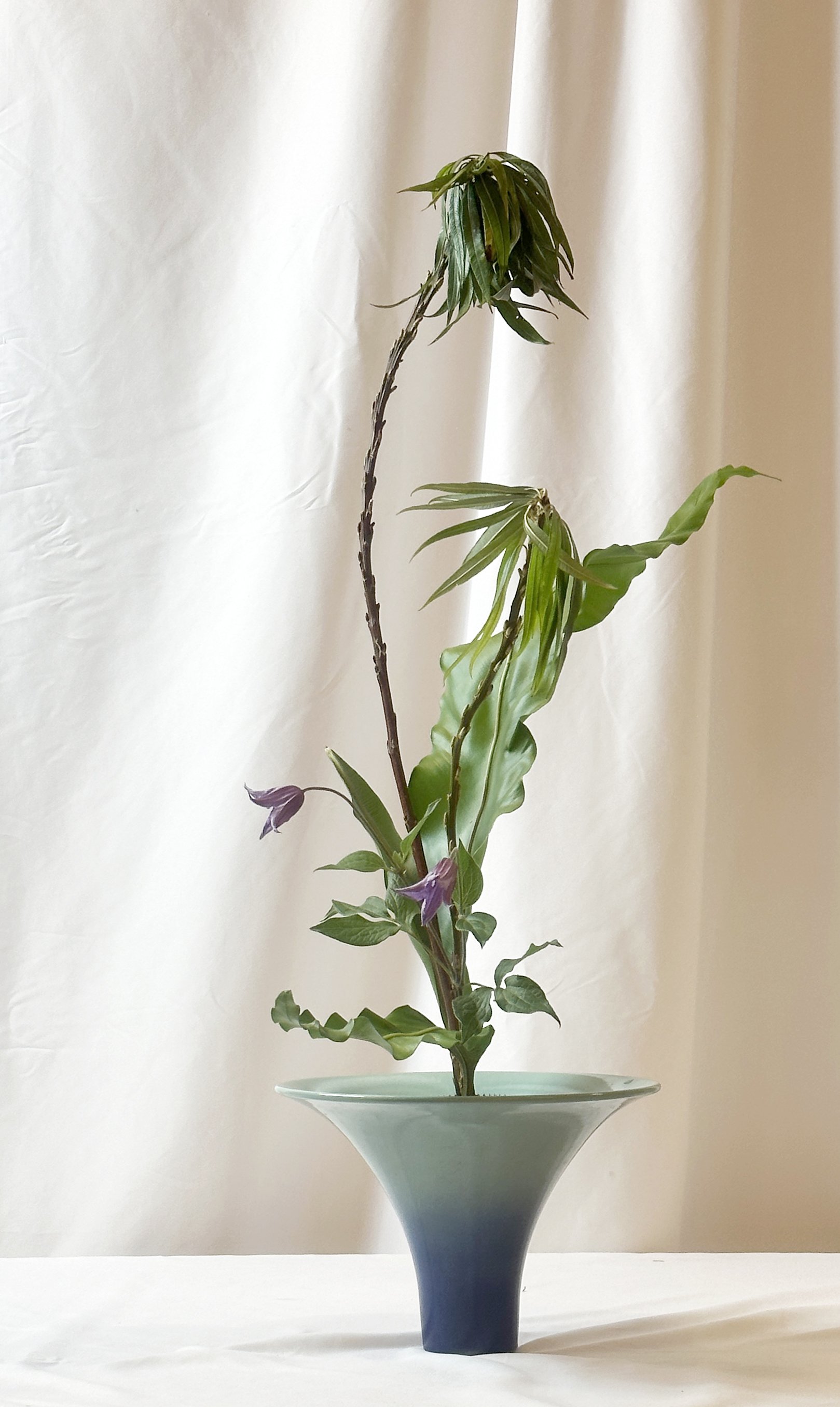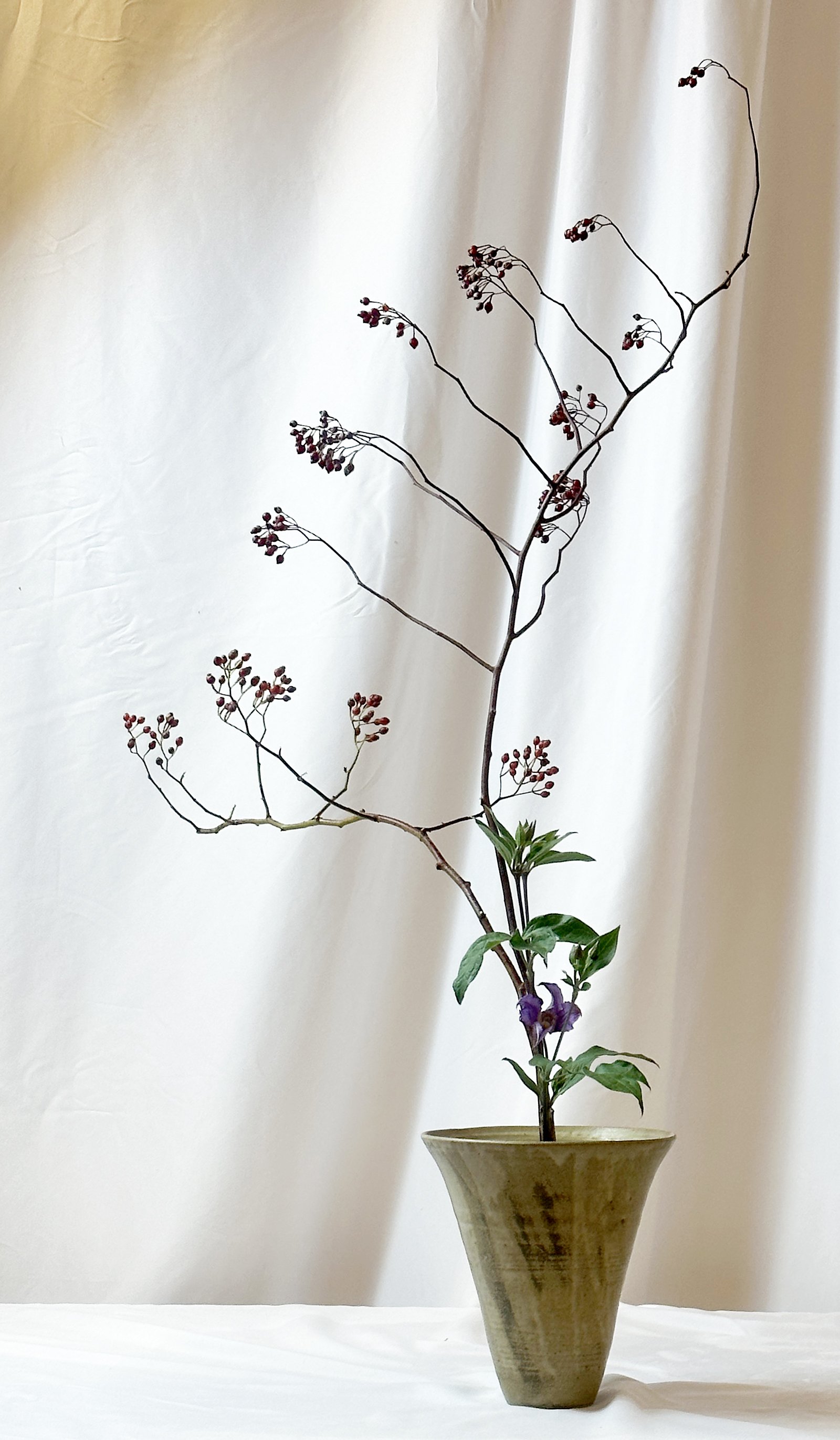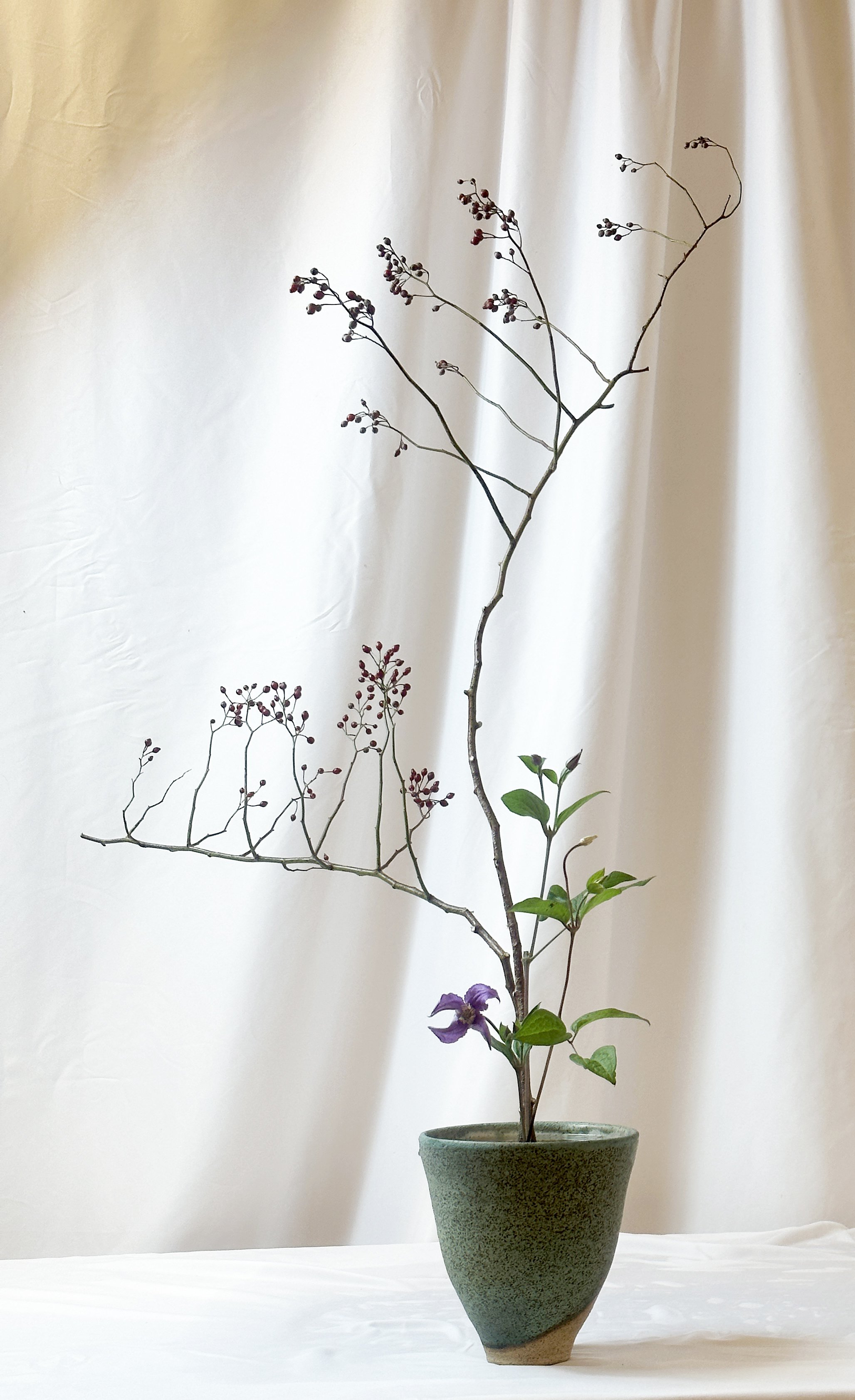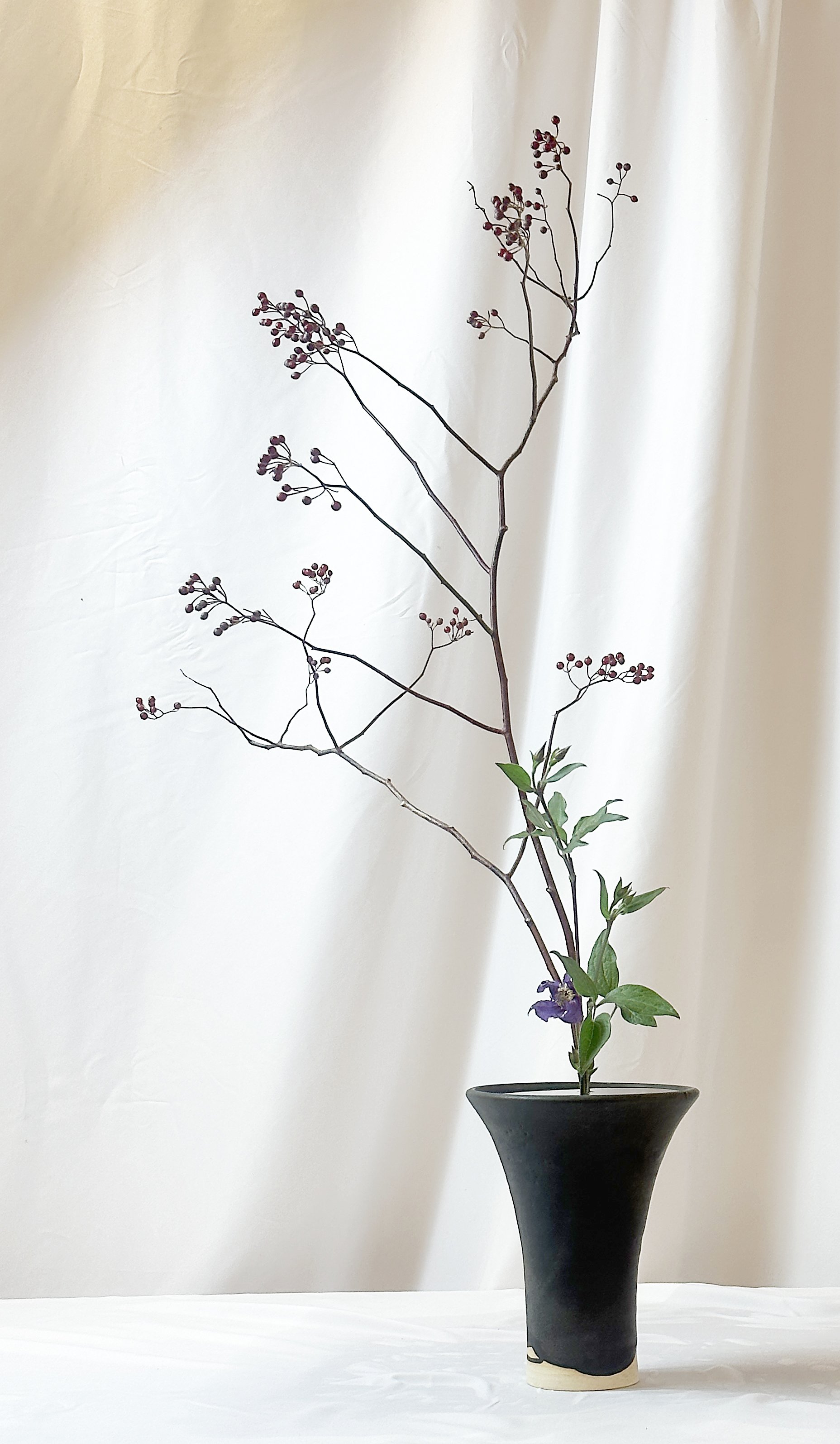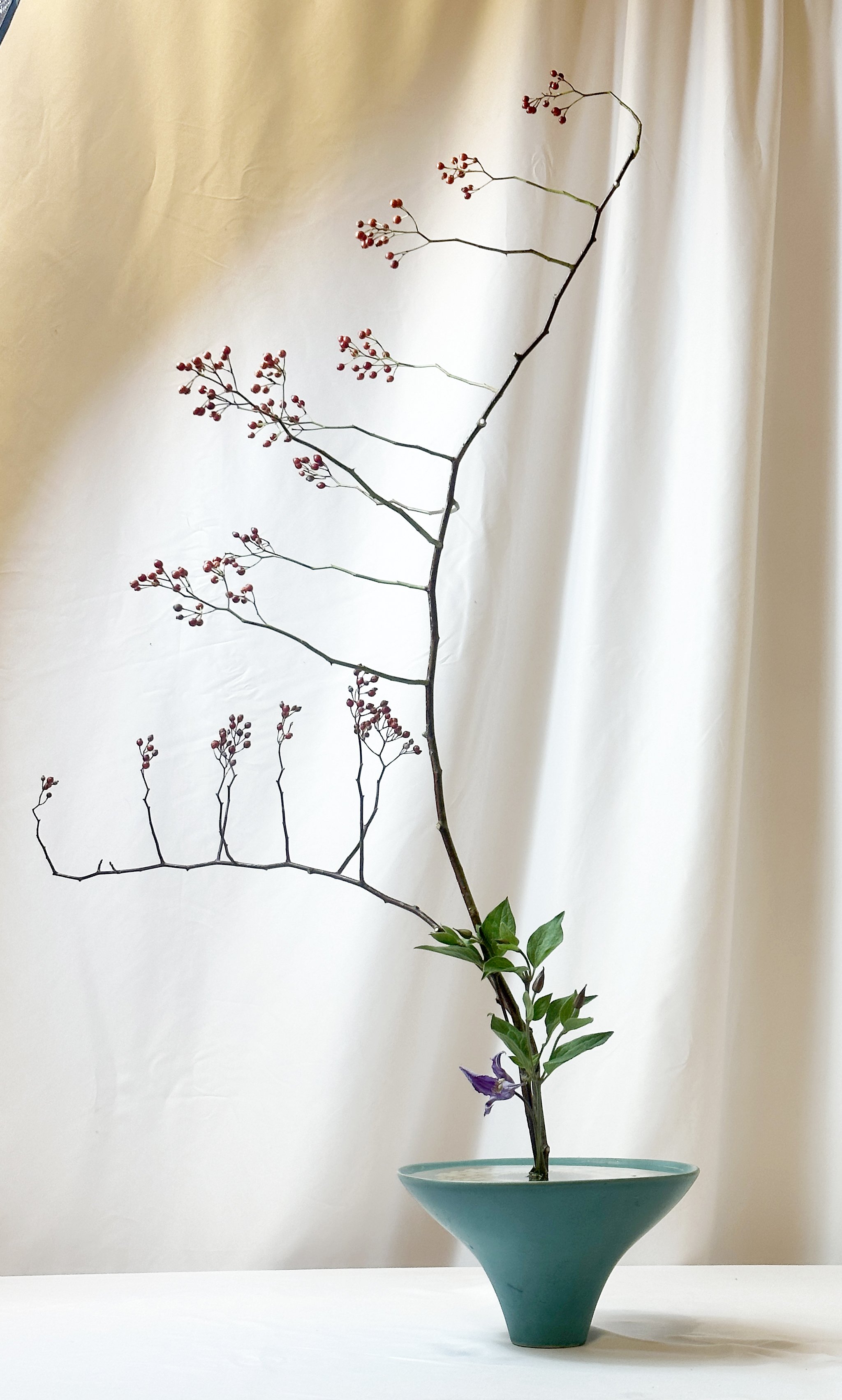Nov 10: Making a Good Shoka & Nov 11: Before Sunanomono, the "Sand Thing"
Dan
Professor Dan is the president of the Ikenobo Ikebana Society of America, Colorado chapter.
He holds the title of Un no Soden. He studies with Professor Kobayashi in the Sogo Tokubetsu-ka program at Chuo Kenshu Gakuin, Kyoto.
Gallery for Oct 10: Making a Good Shoka - Shoka shofutai nishuike and shoka shofutai sanshuike
Shoka is the Ikenobo form that captures the shussho, or the natural character of each plant.
Dan Sensei provided a comprehensive lesson in shoka, encompassing the origin, history and the aesthetics of the style. He states that you do ikenobo with your feet, as selecting plants to gather is so important. Shoka should provoke an emotional response with memories of nature. It has the minimalism of the Zen movement that developed about the same time. It was developed for display in a home’s tokonoma, for the appreciation of guests.
Shoka Sanshike with 3 species is a more recent development. It can have a more avant garde feeling with more drama and therefor not always completely shusho. It still must have a koshi, tai, mizugiwa and one view point
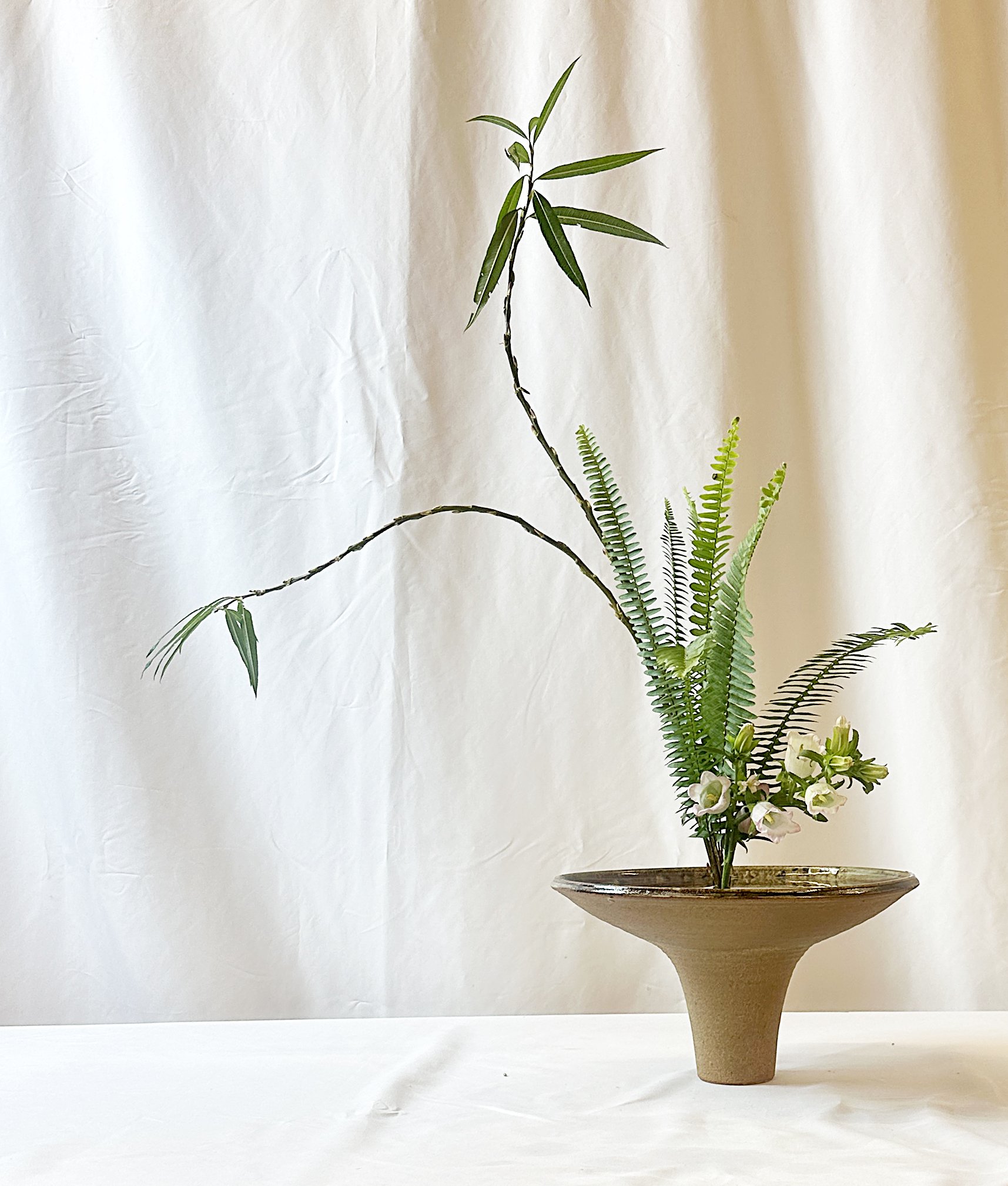

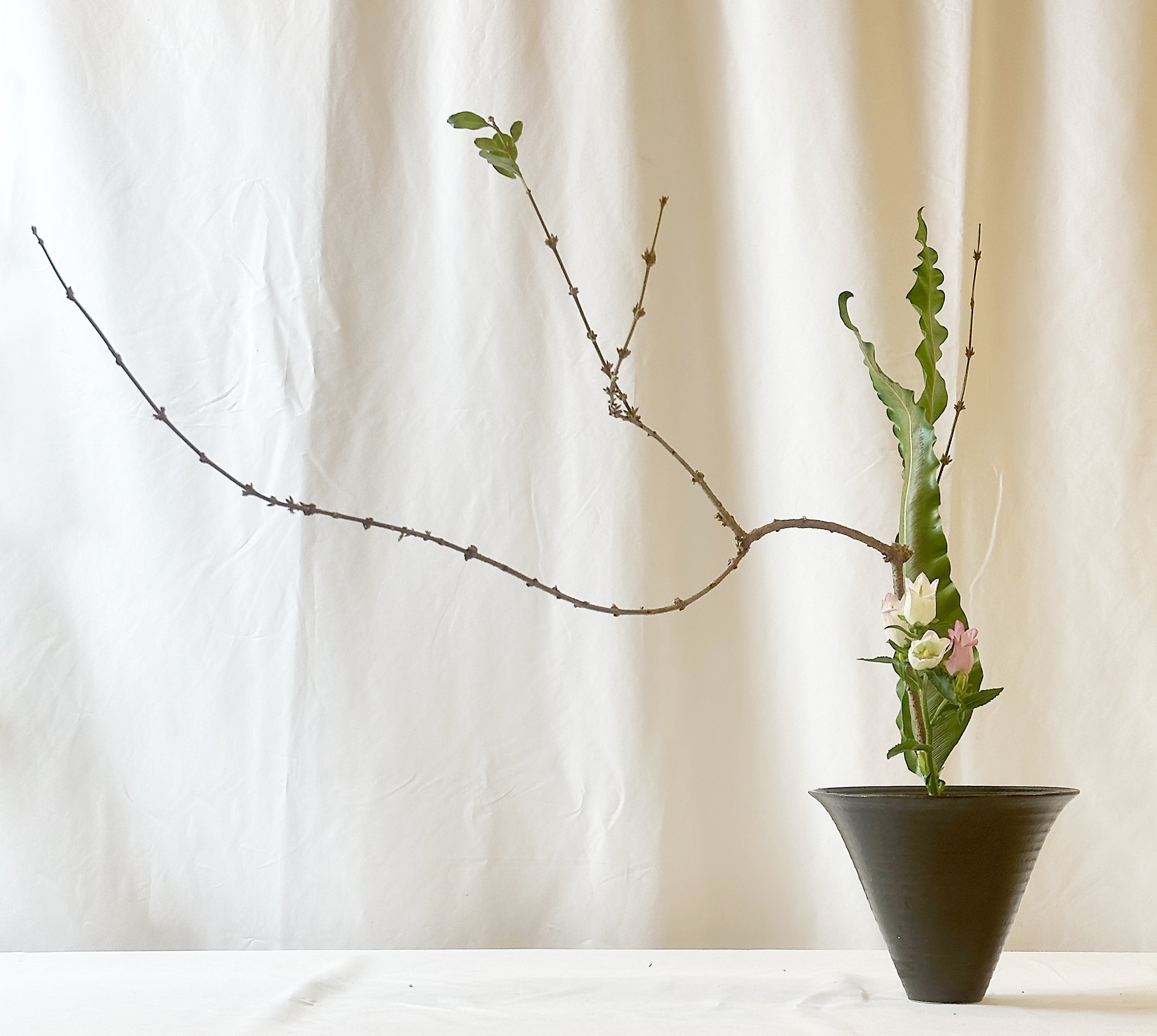

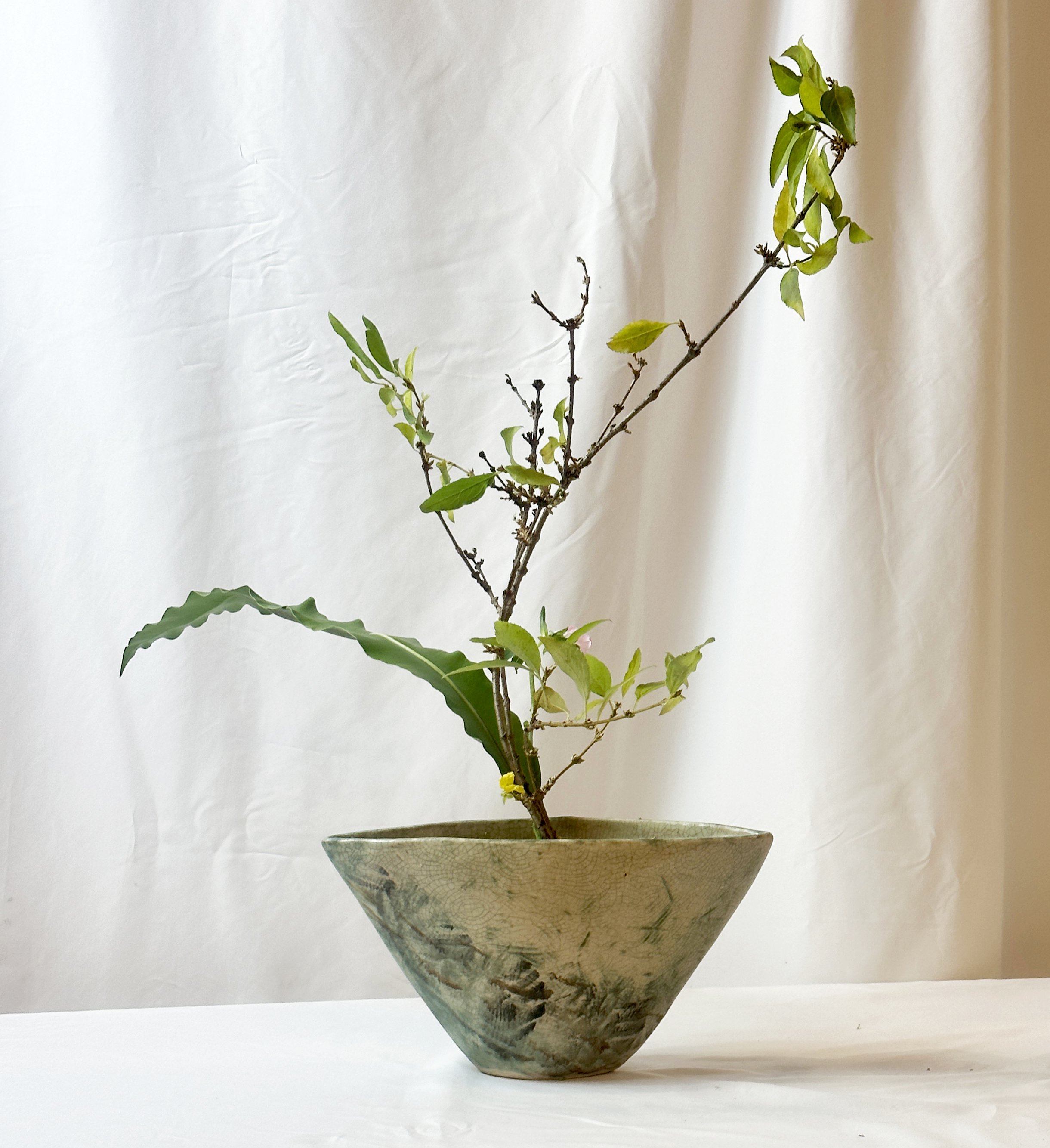
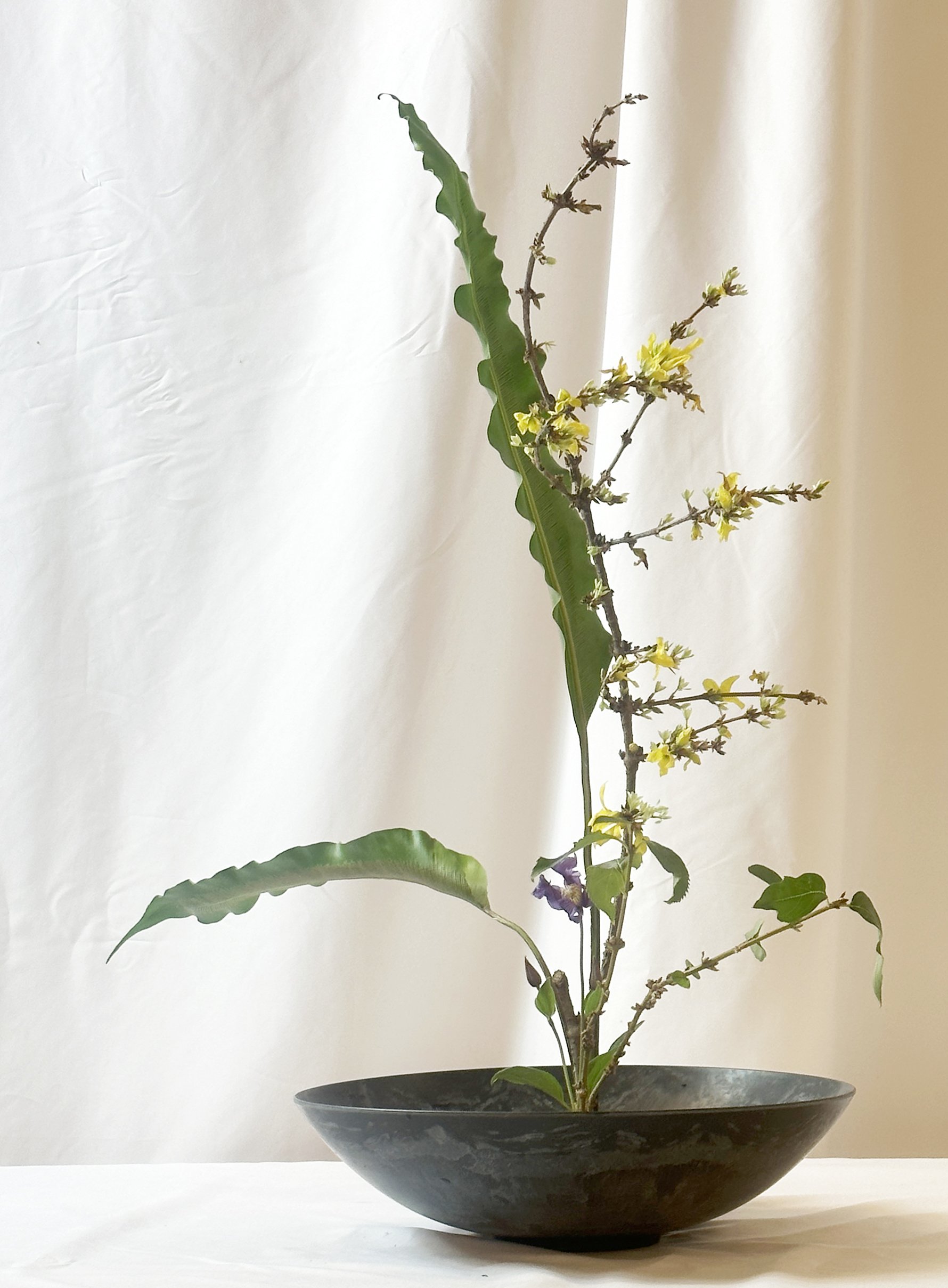
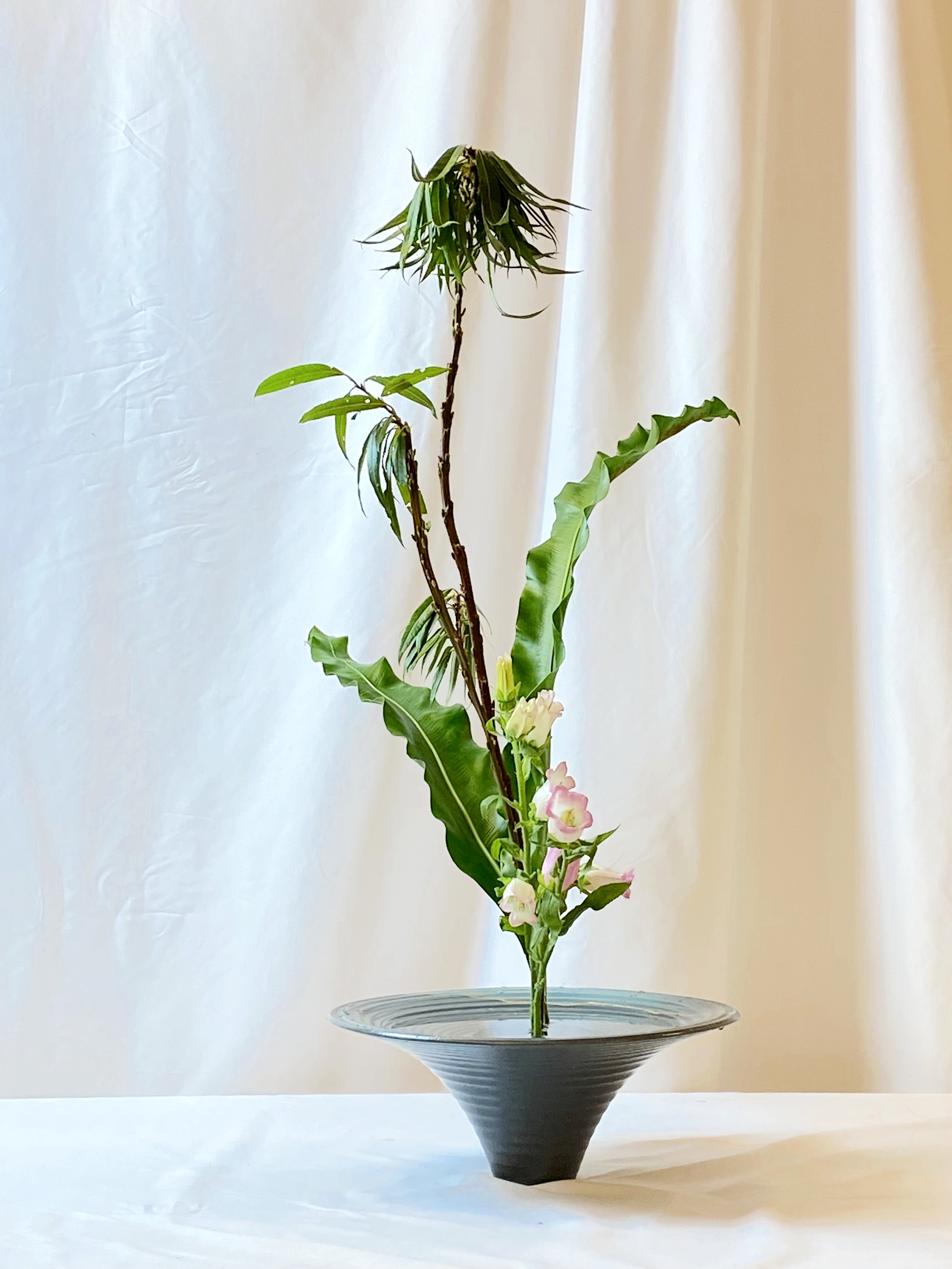
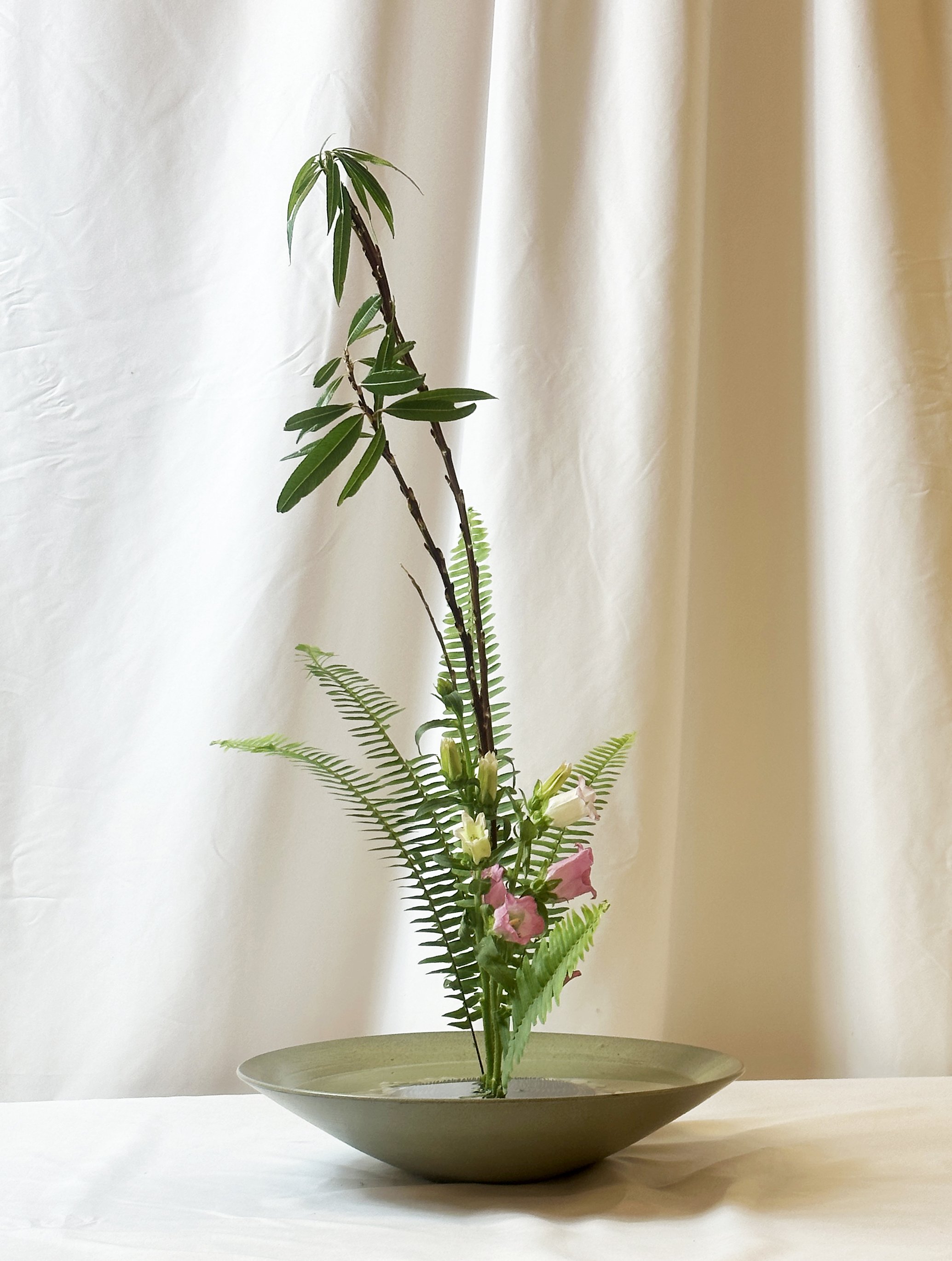
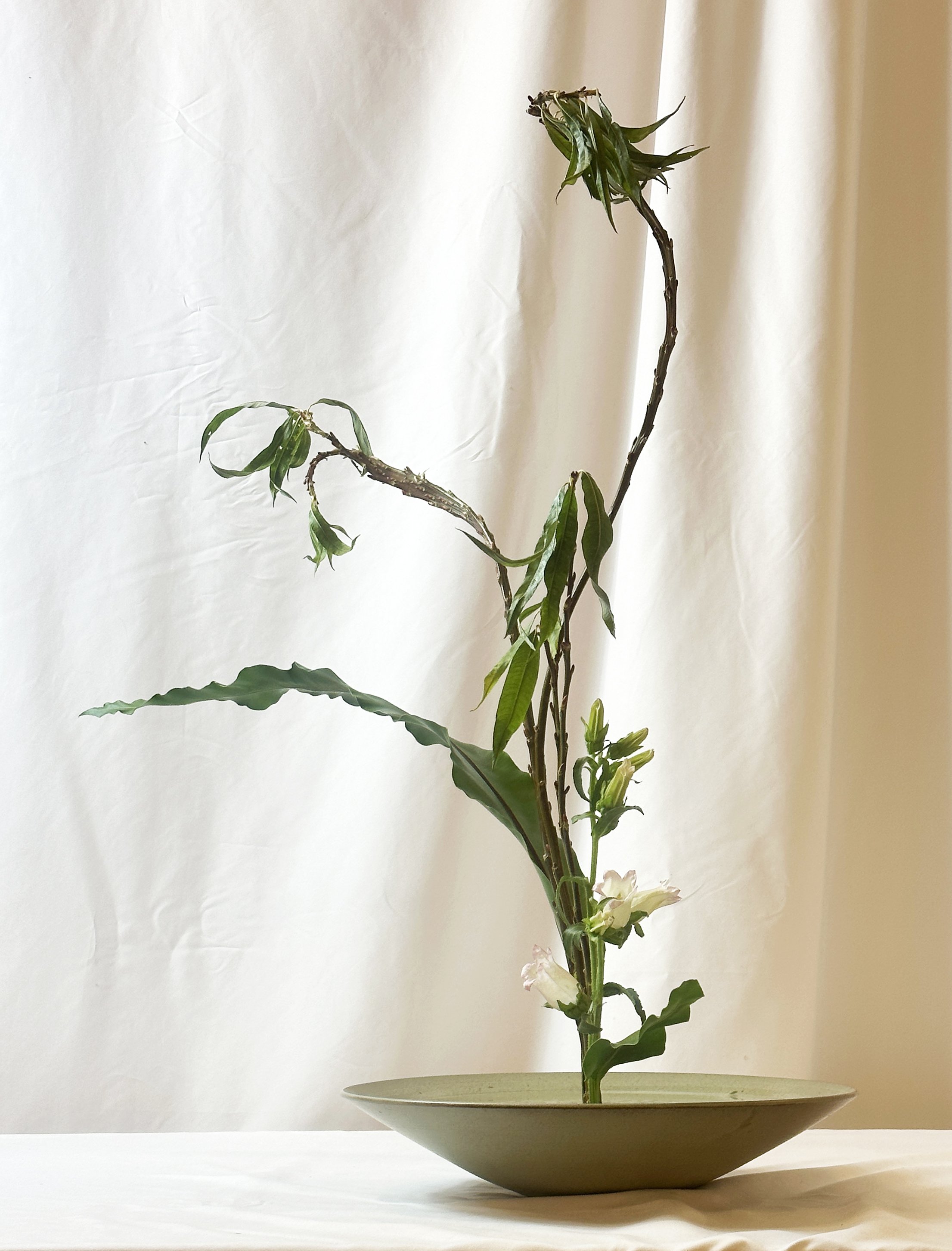
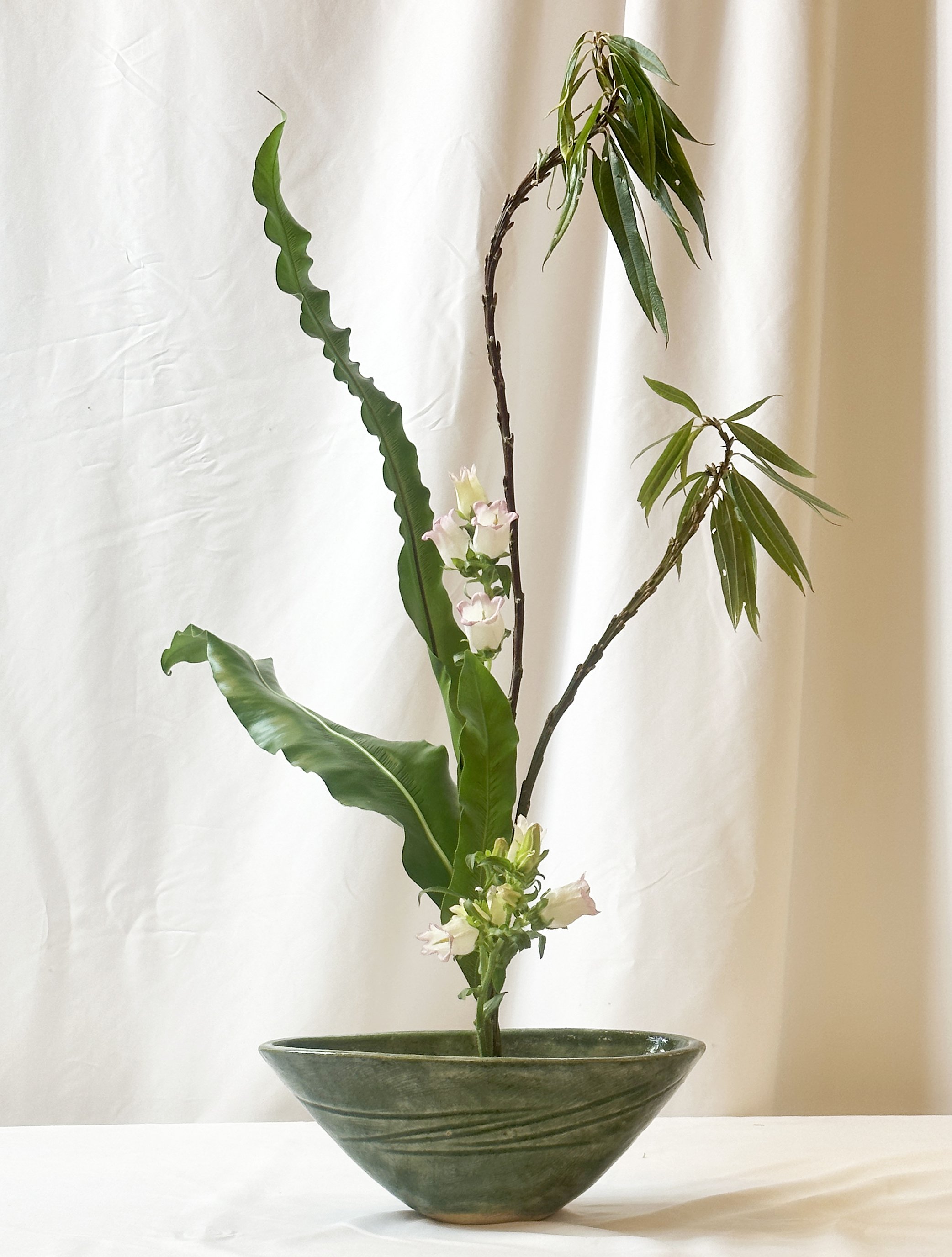
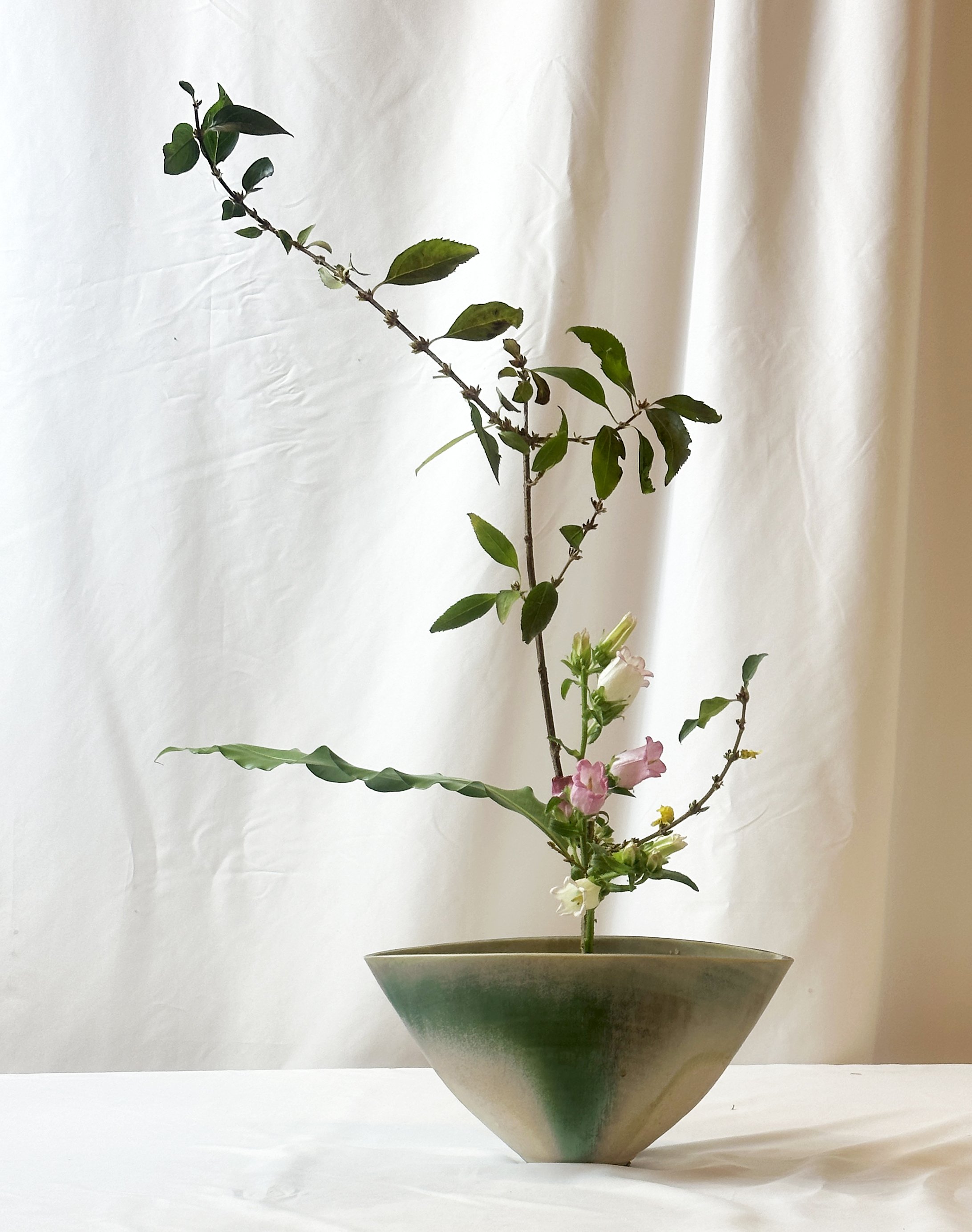
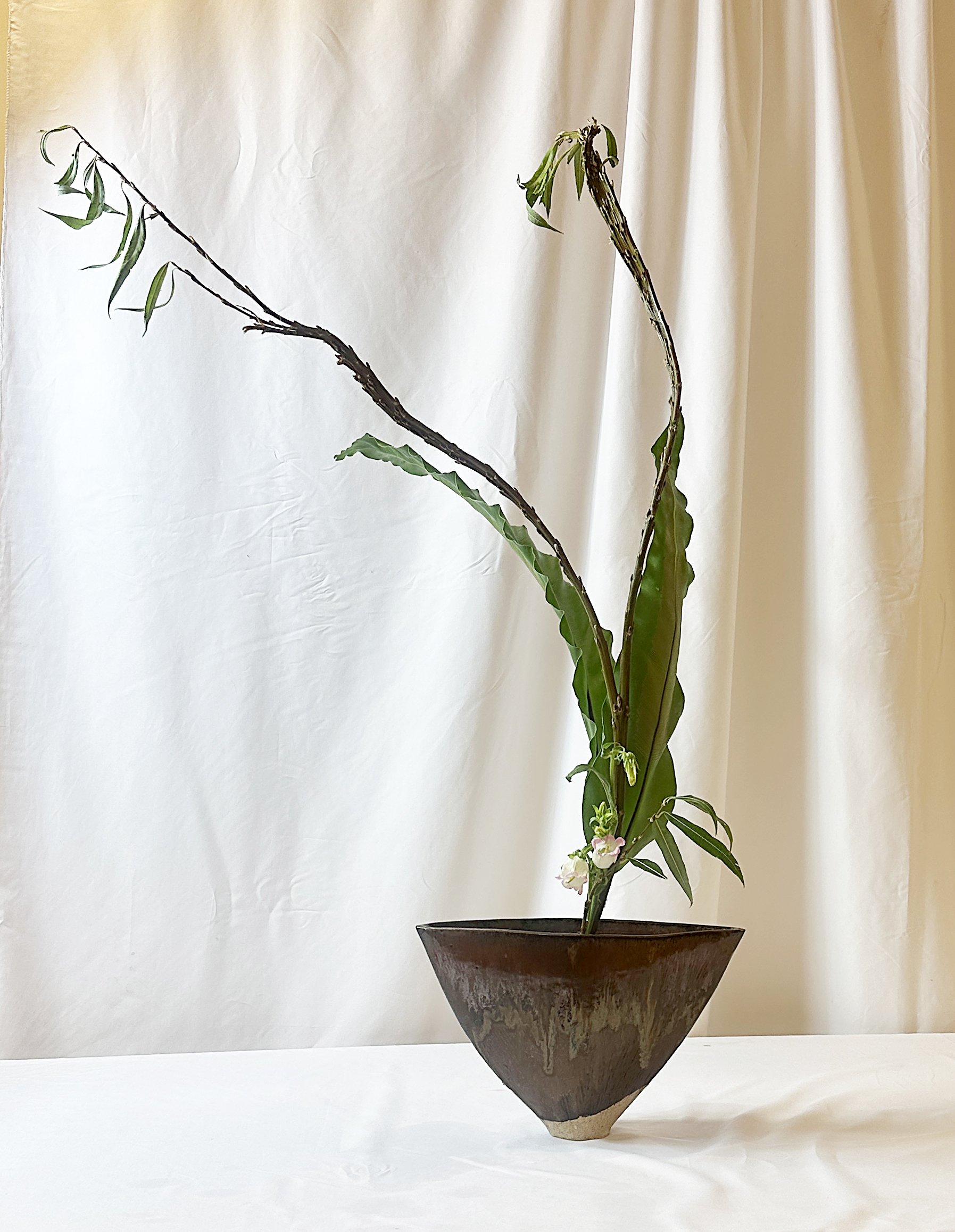
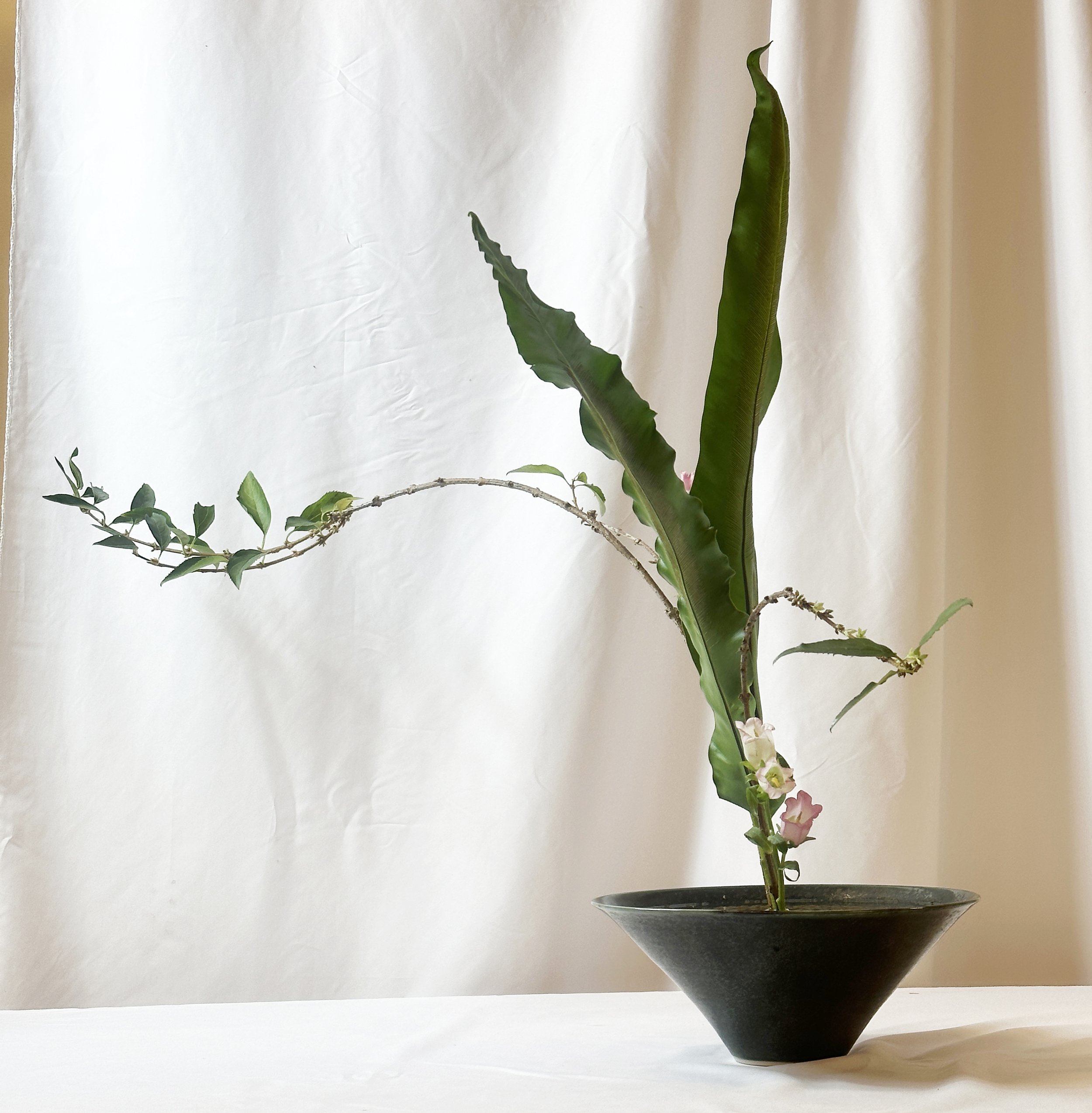
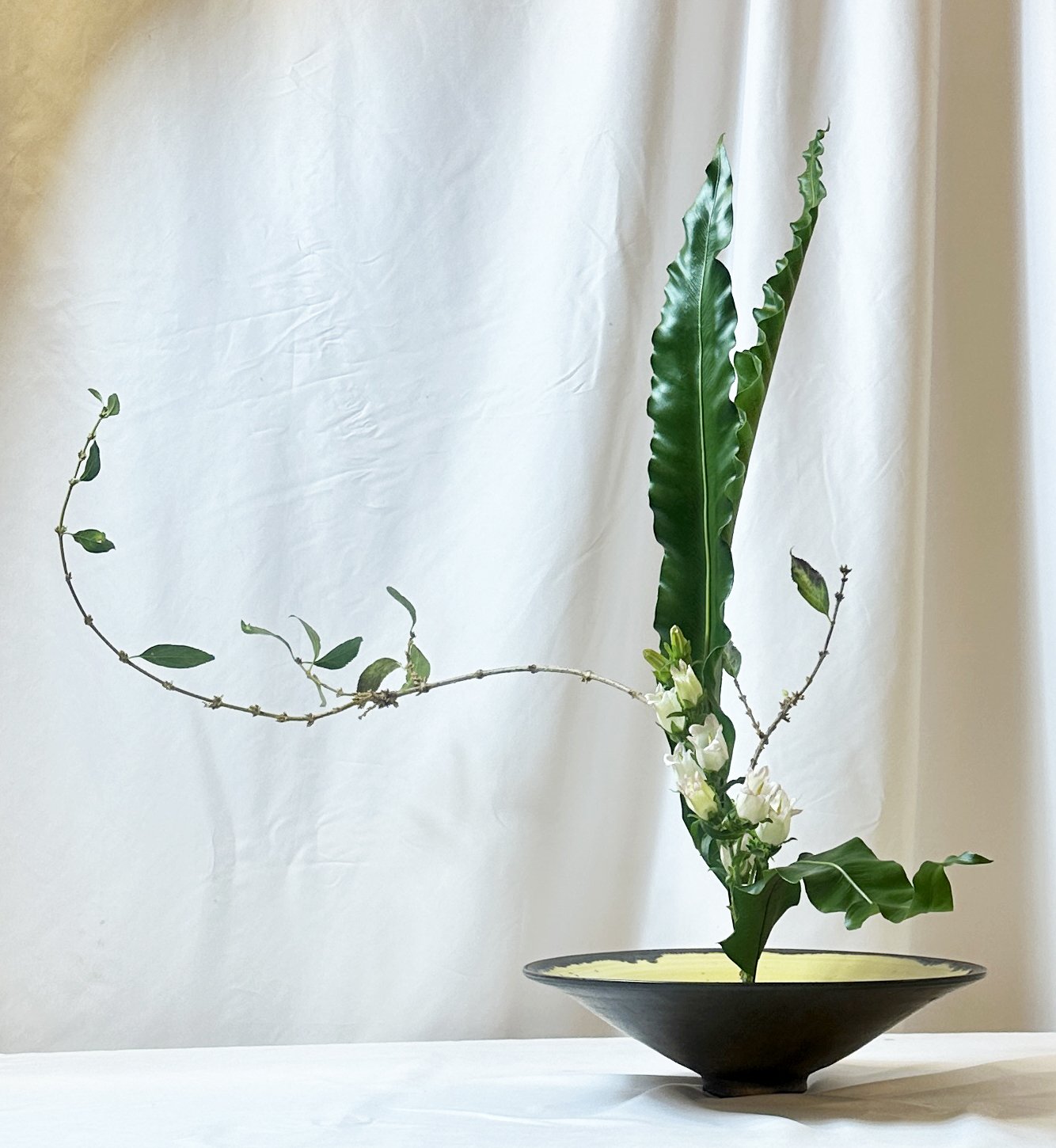

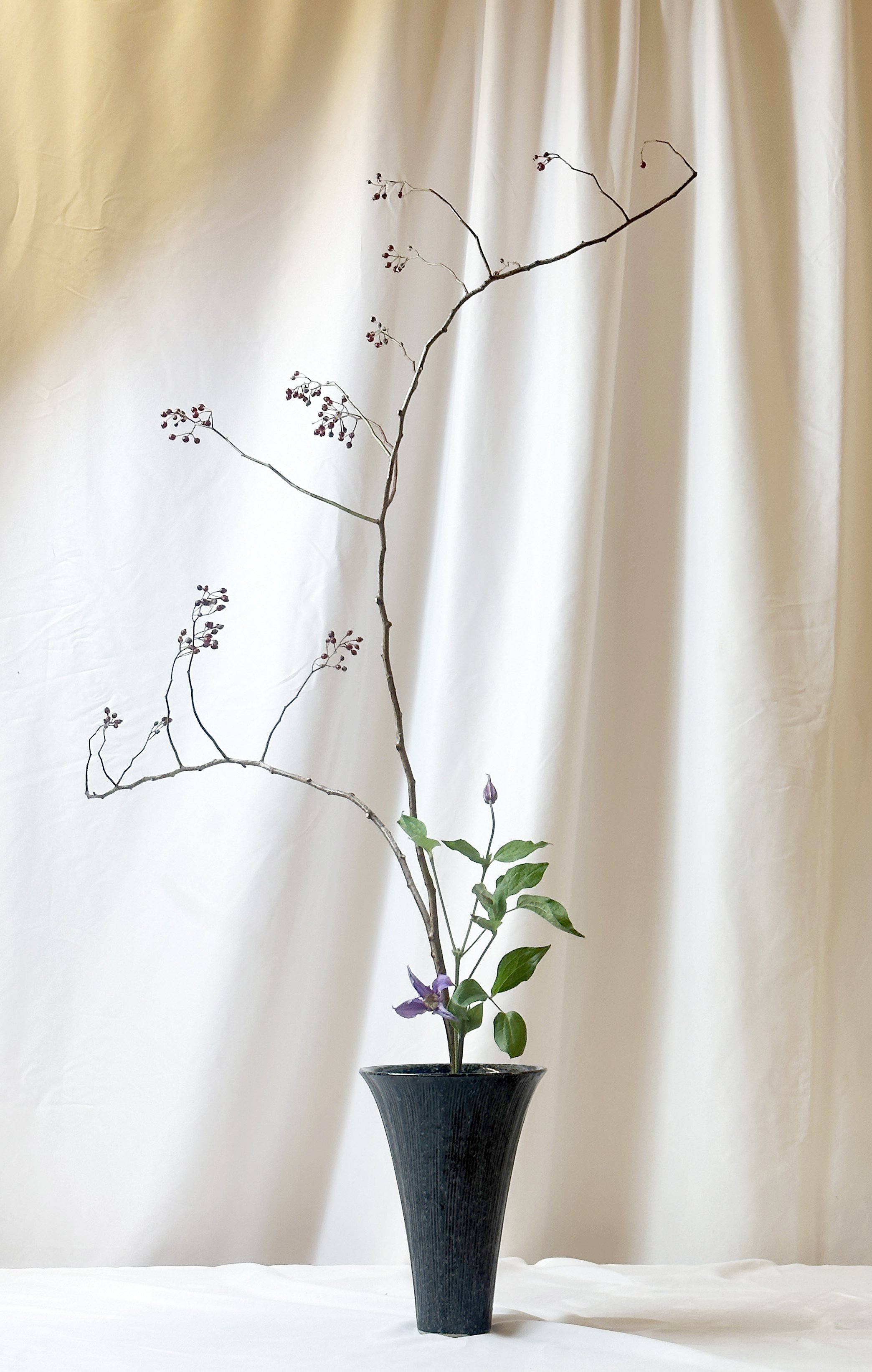
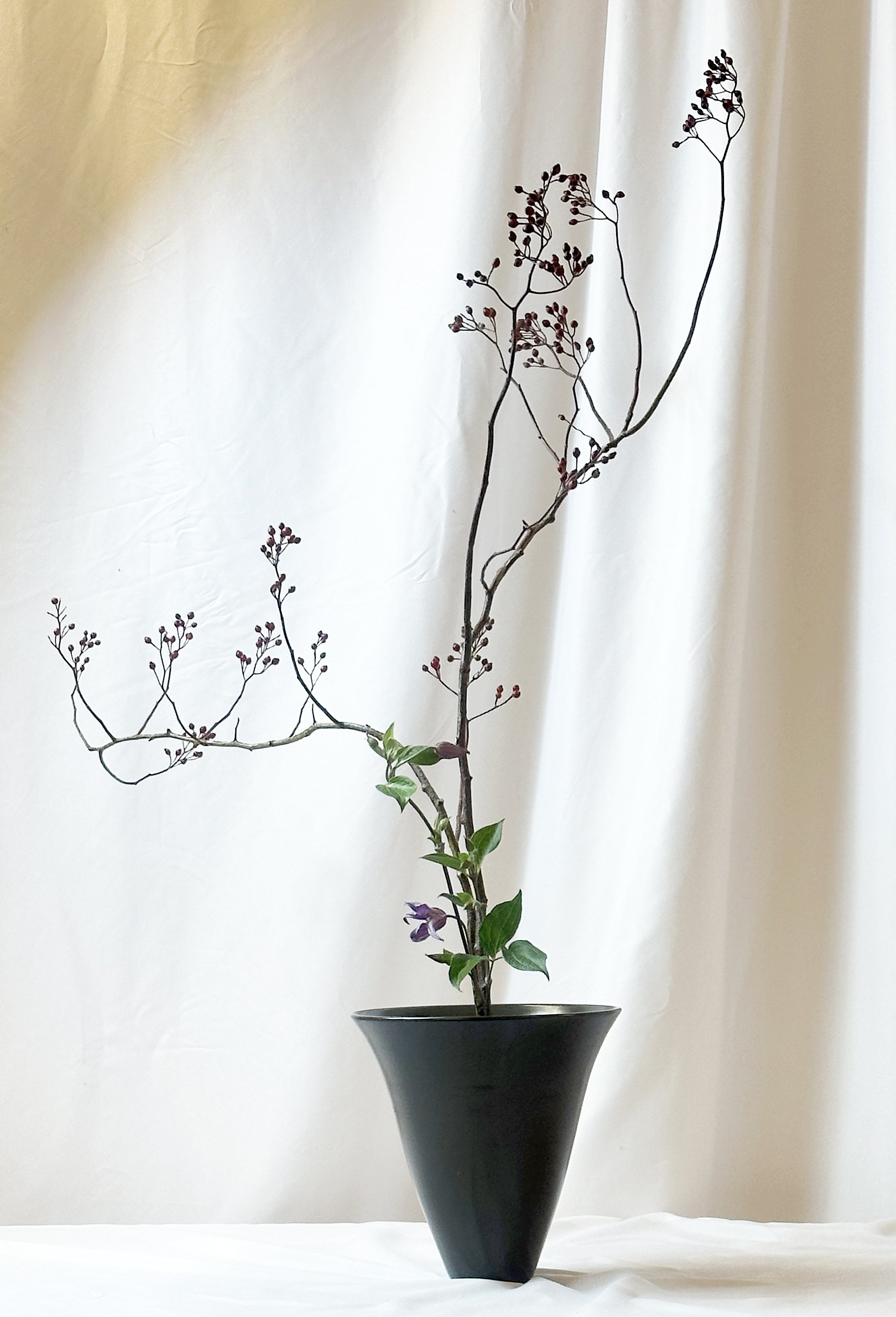



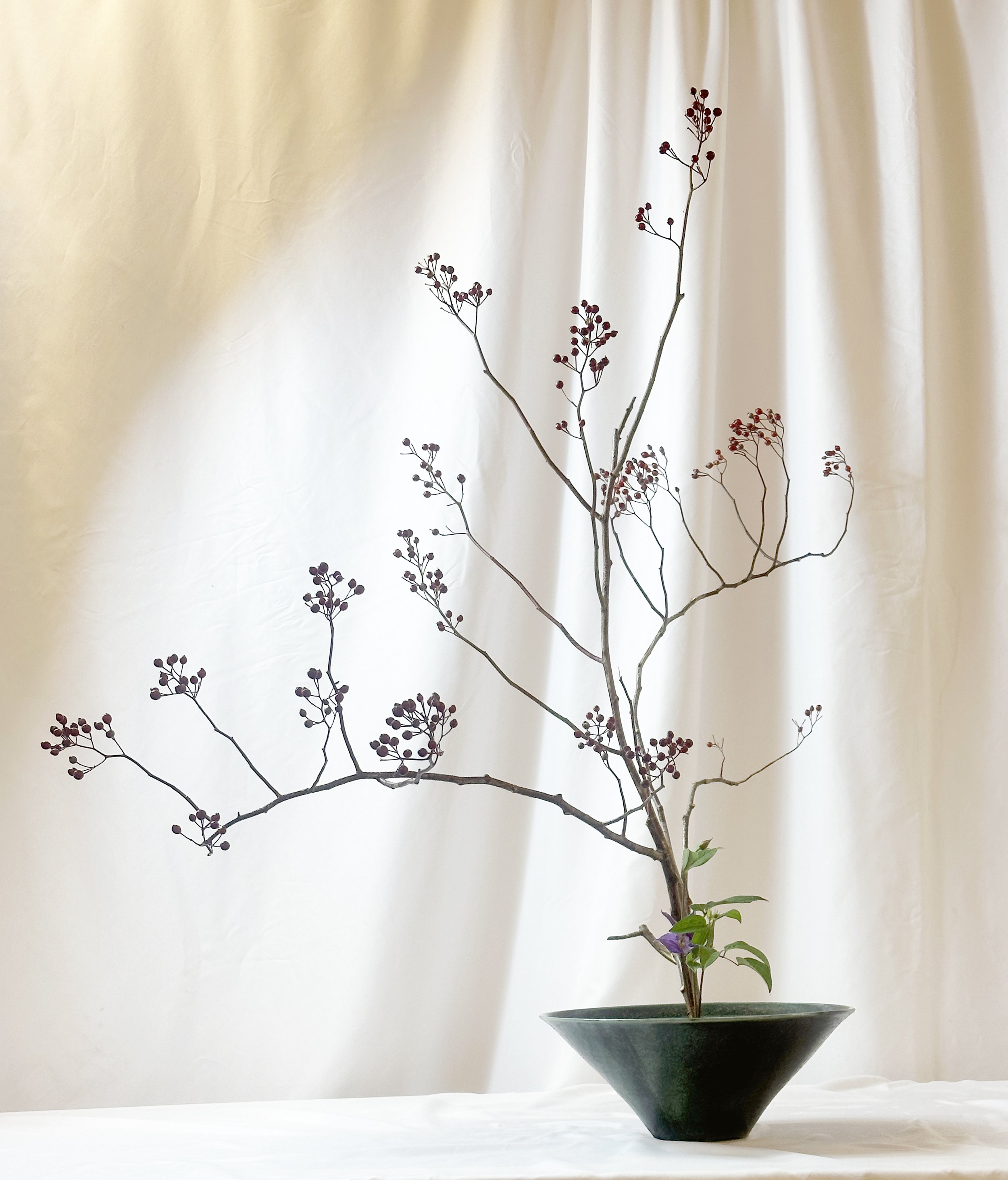
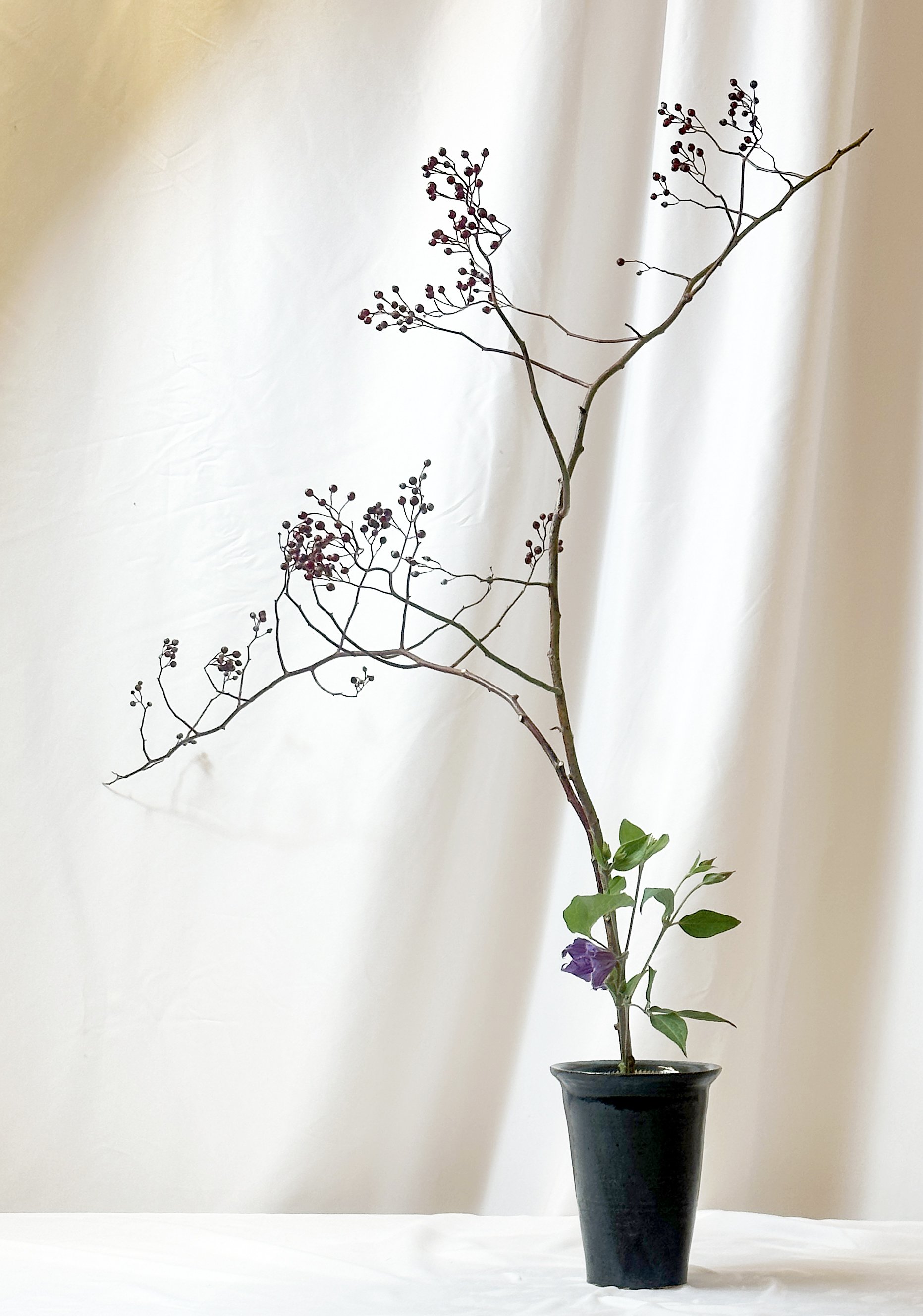
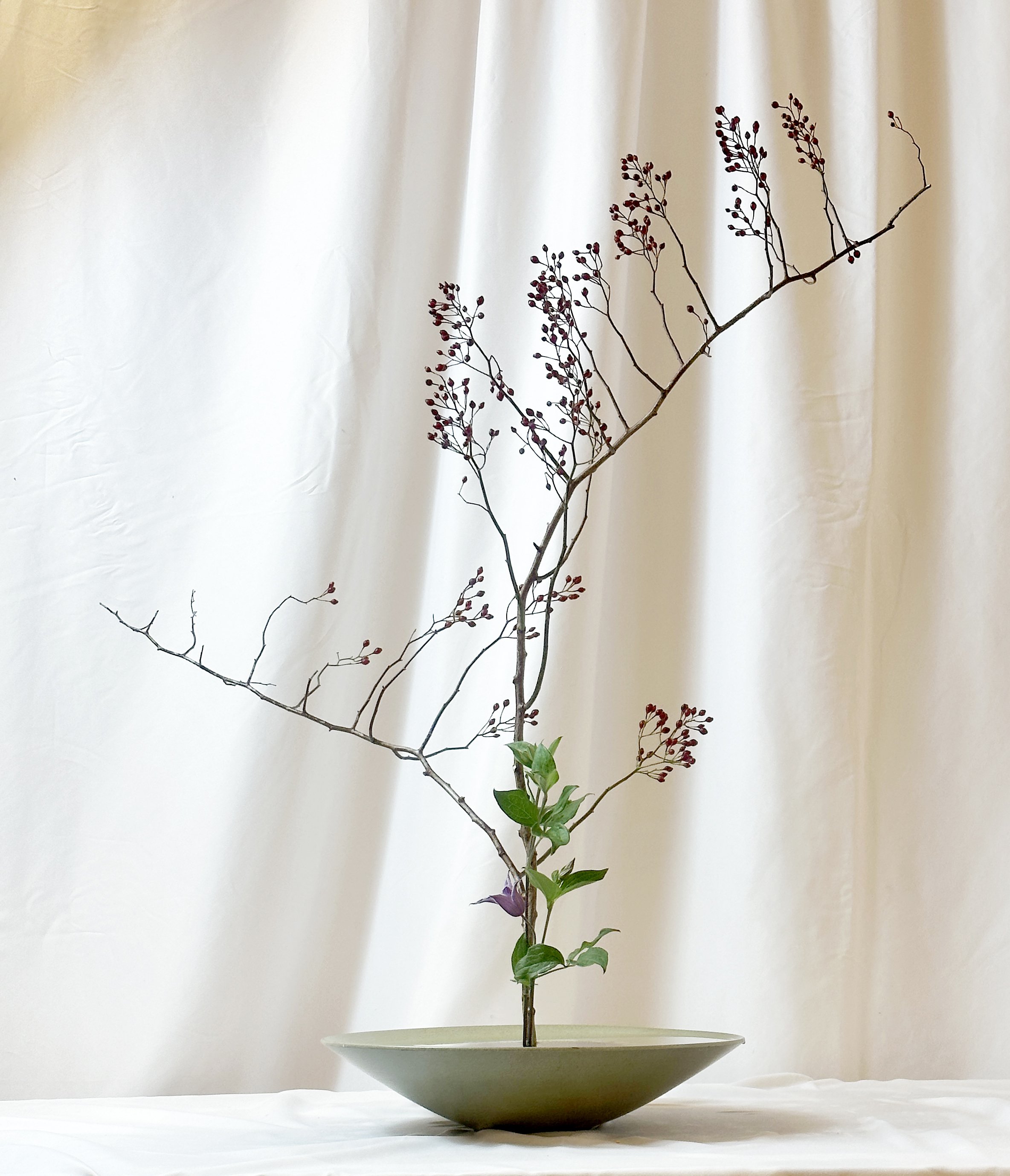
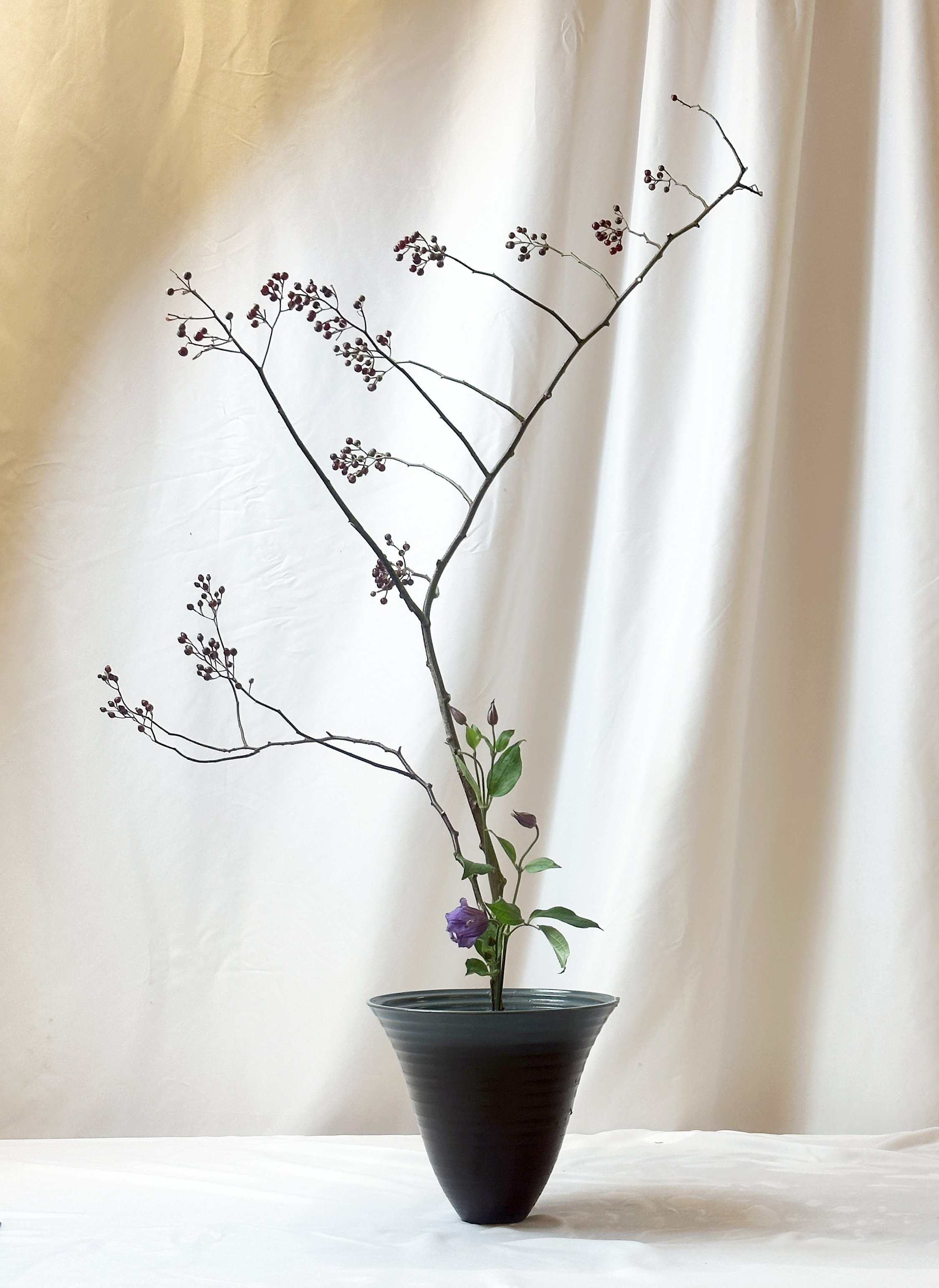

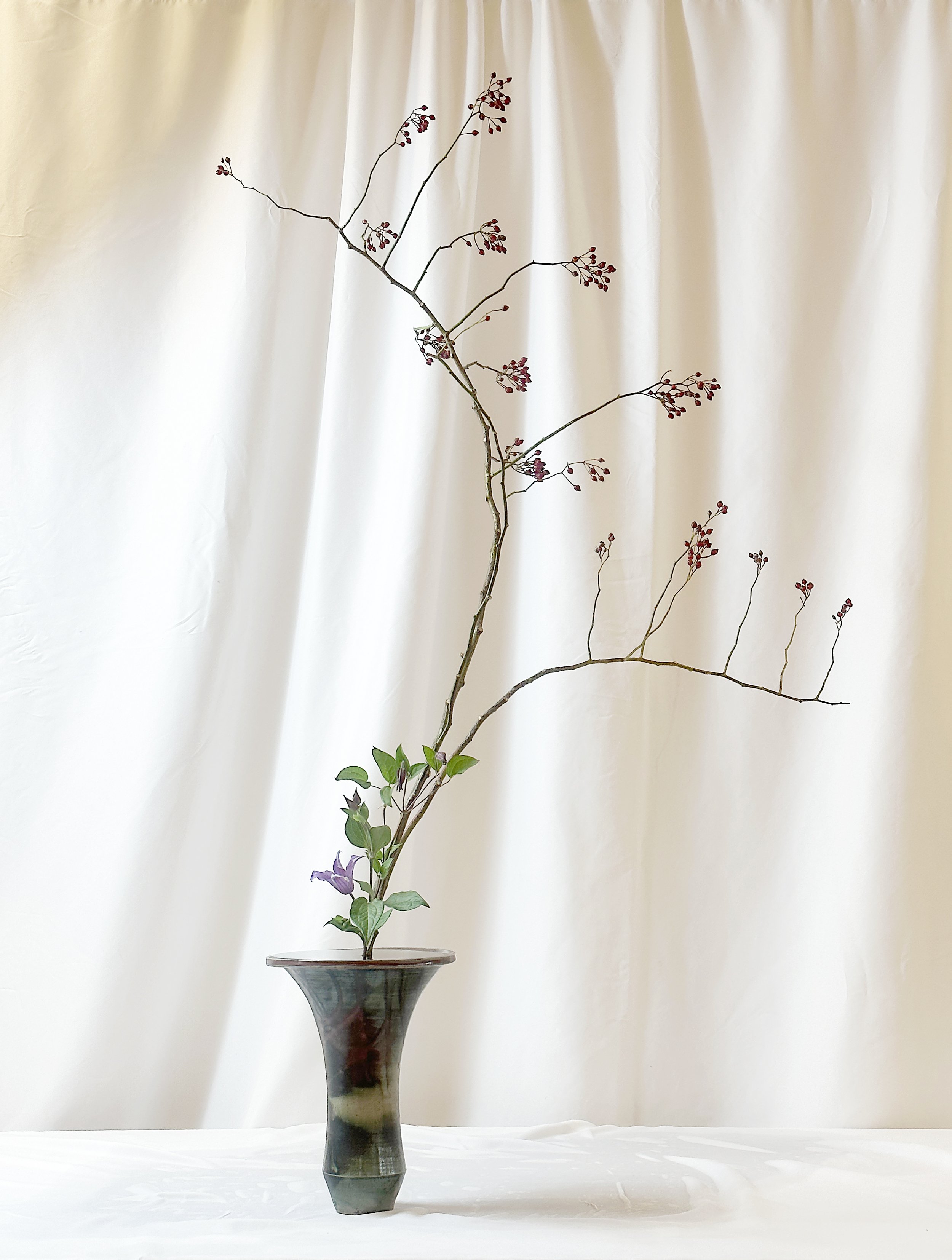

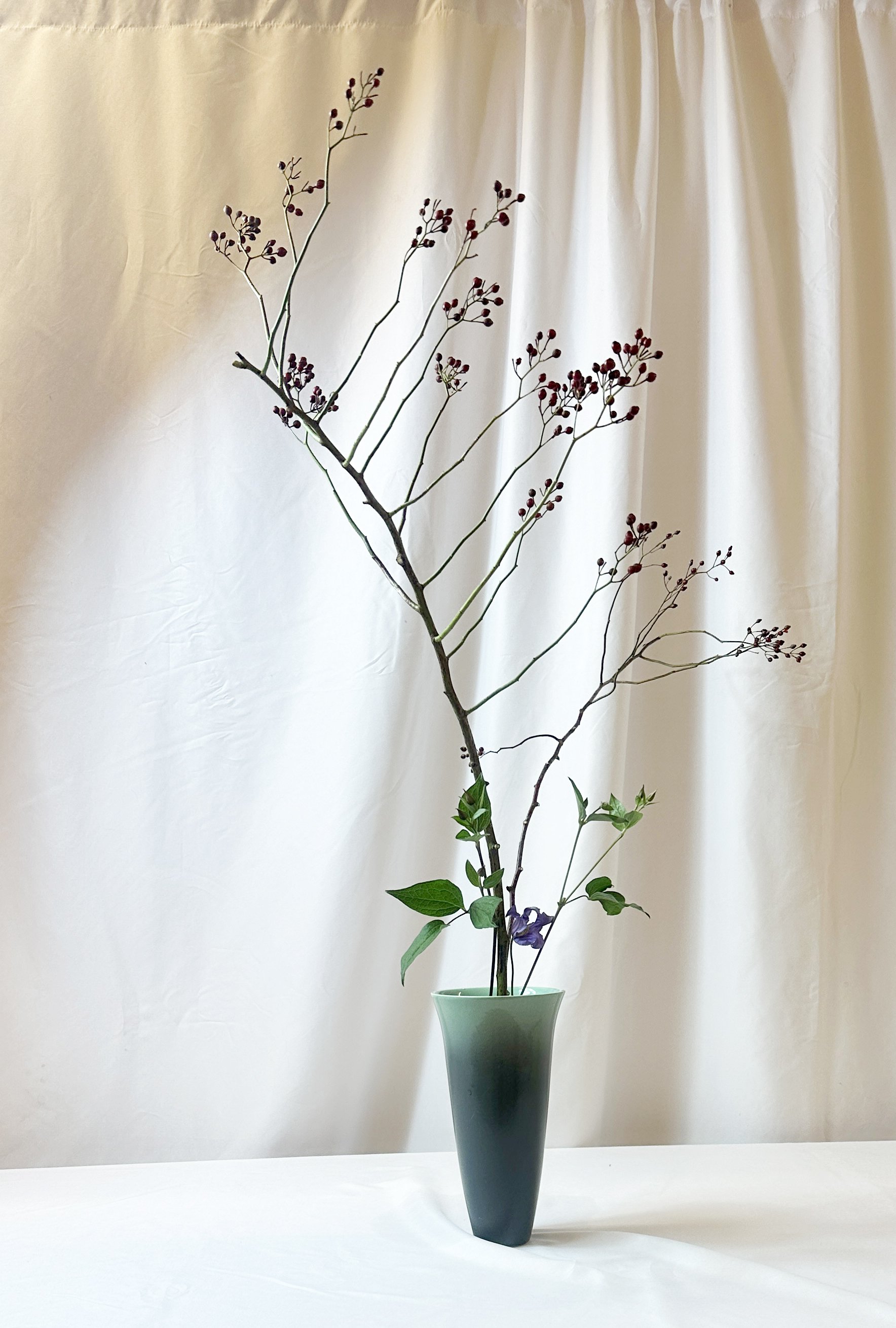
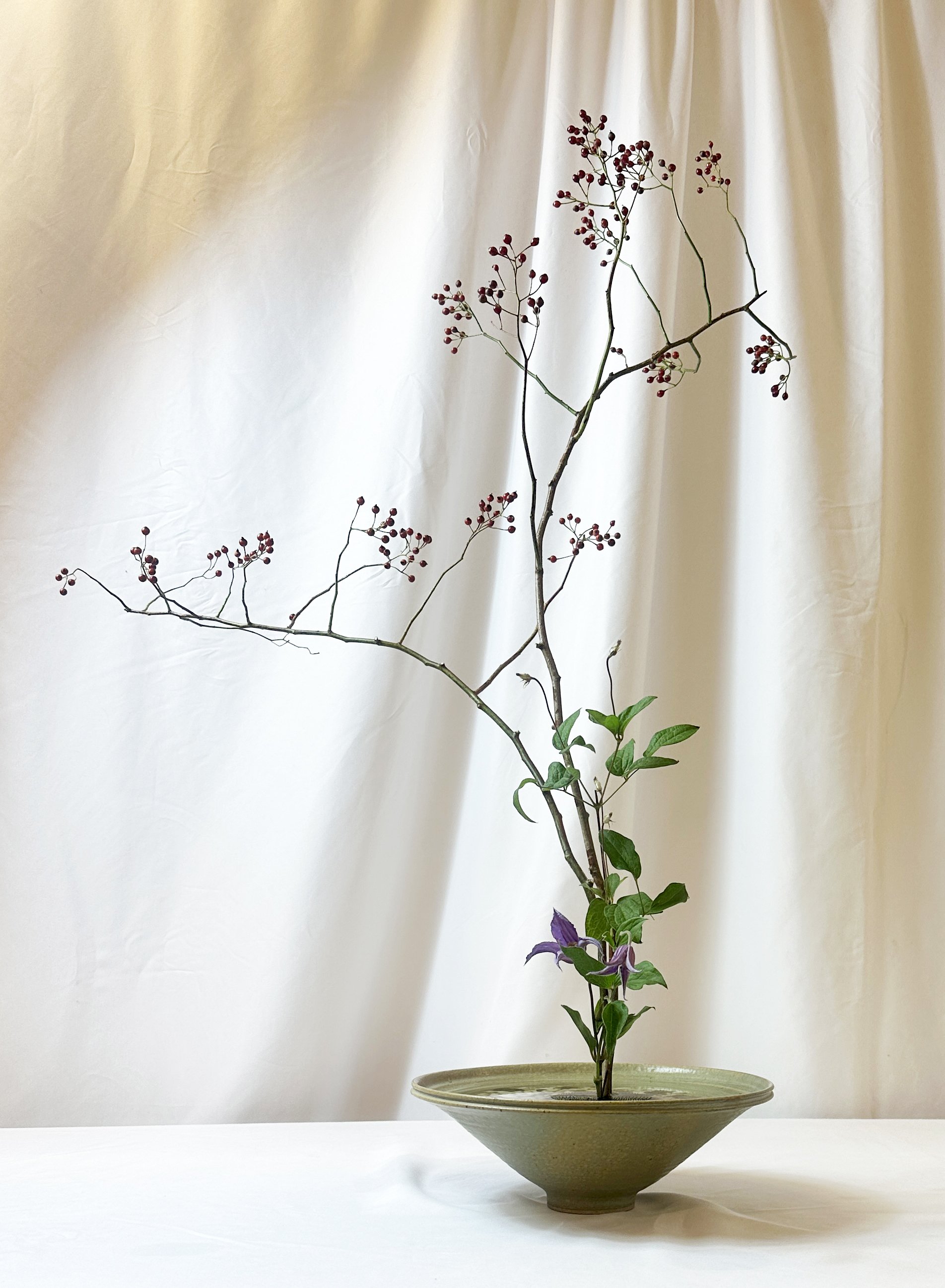
Gallery for November 11 - Before Sunanomono: the “Sand Thing”
Sunanomono Rikka is a style of Rikka that spreads sideways, unlike sugushin rikka and nokishin rikka styles that emphasize the vertical dimension. The sunanomono arrangement is wider than it is high, distinguishing it from the regular rikka works that are taller than they are wide. This rikka is arranged in a horizontally-elongated container. Another feature of sunanomono is that the water surface is not visible and sand is used to hide the water.
Professor Dell Agnese lectured on the recent scroll discoveries that showed an earlier form that was practiced many years prior to the development of the standard curriculum for a sunanomono. Because of this, rules are somewhat relaxed. The basic rule is it must have white sand/gravel showing rather than water, and it should be at least twice as wide as it is tall.
